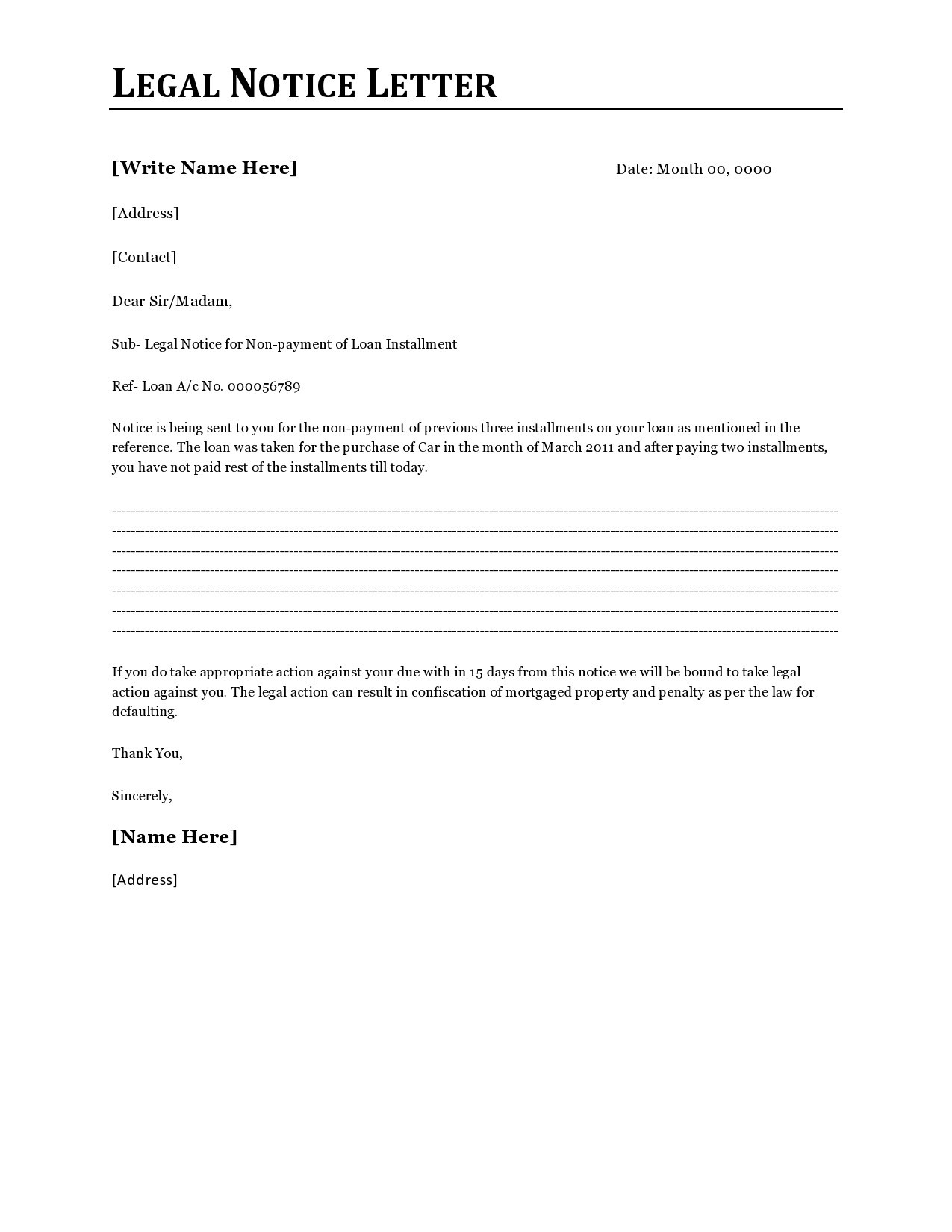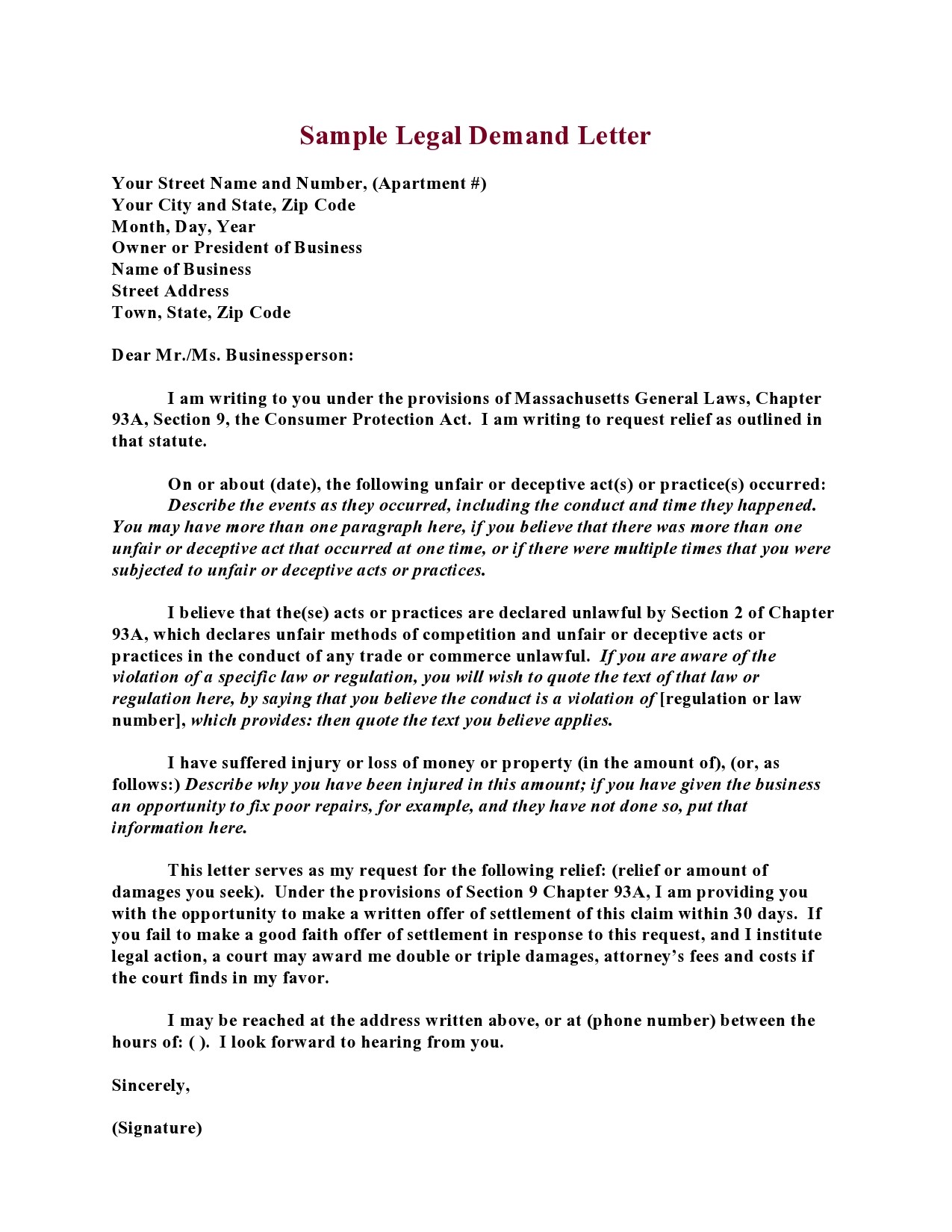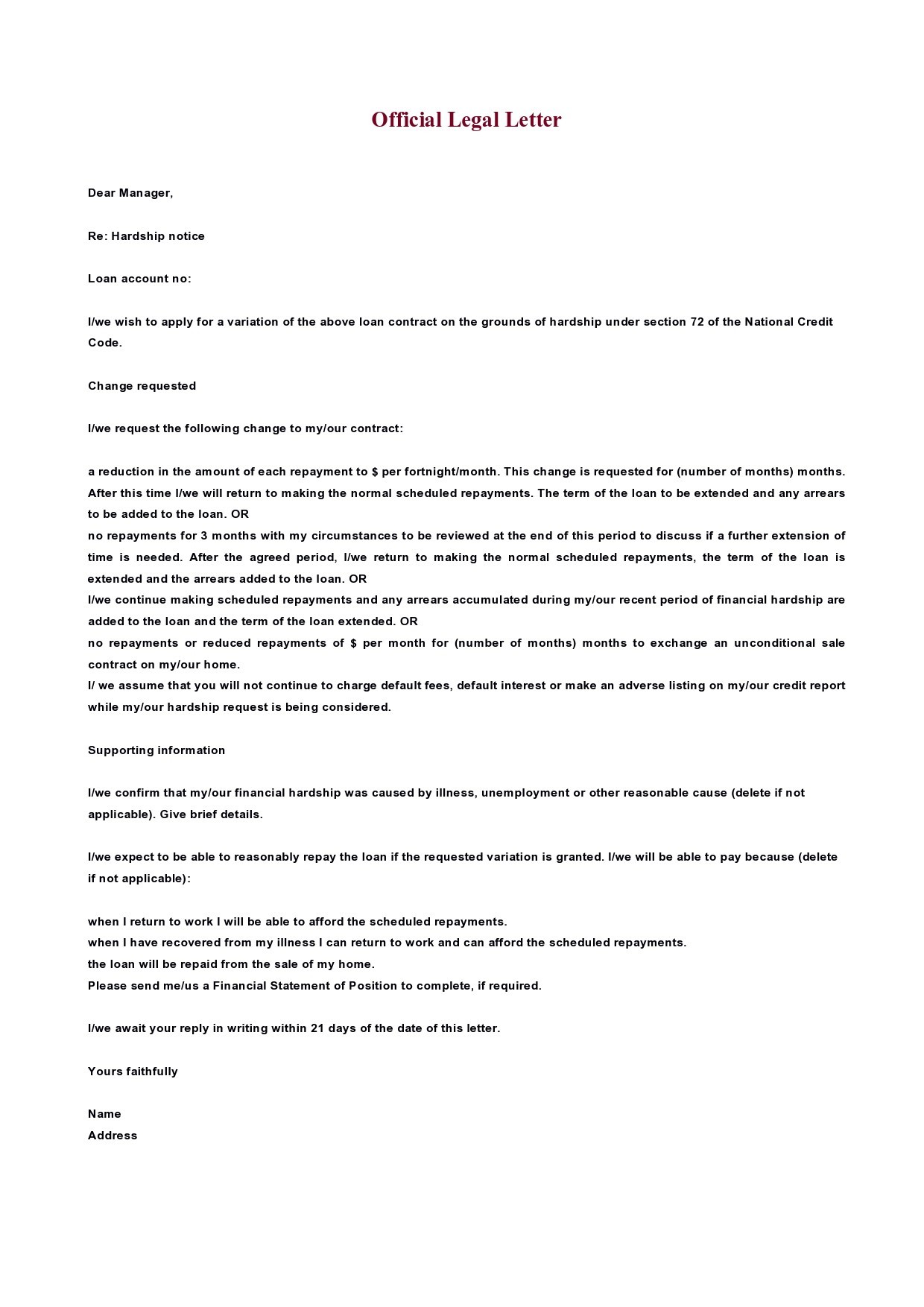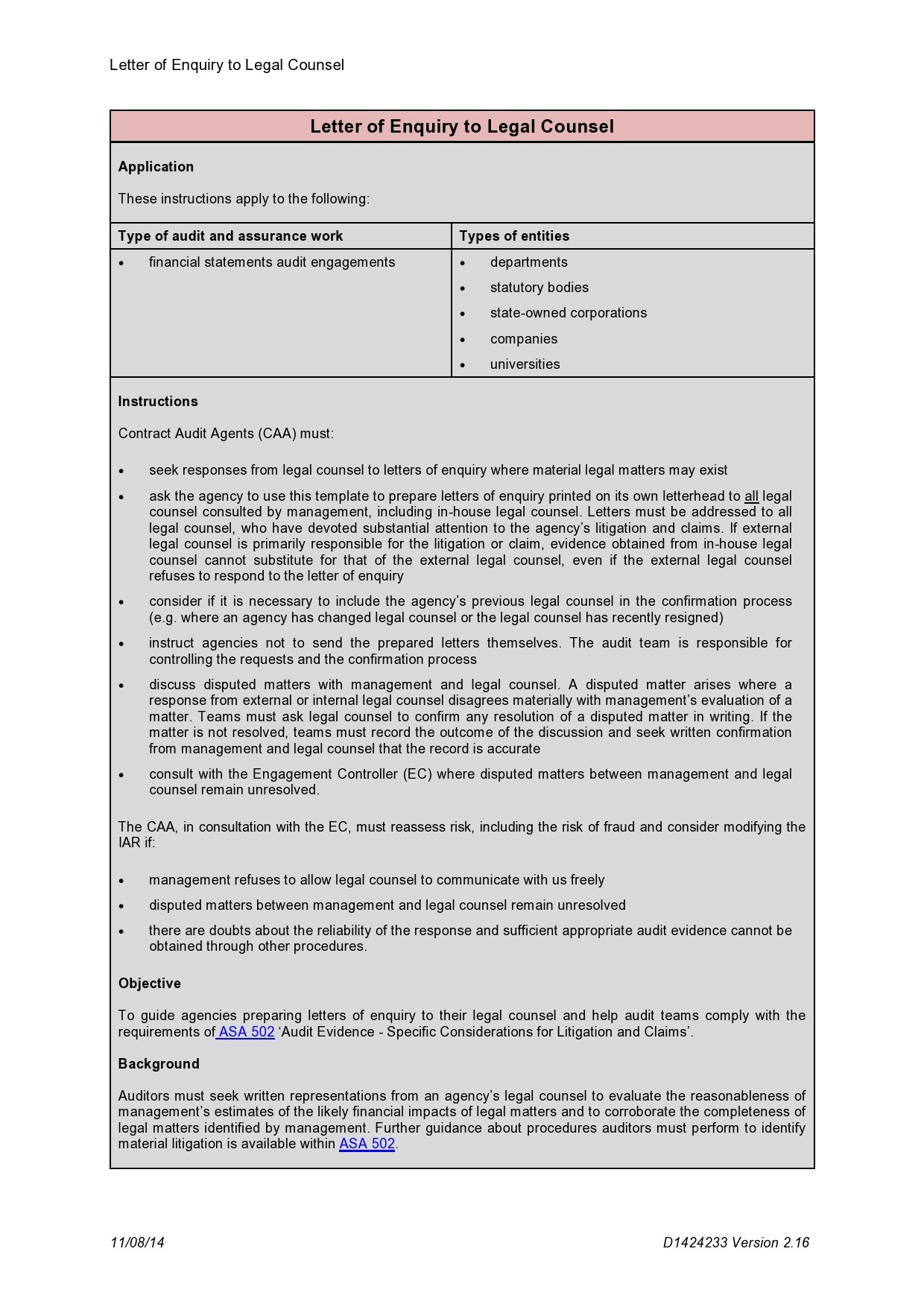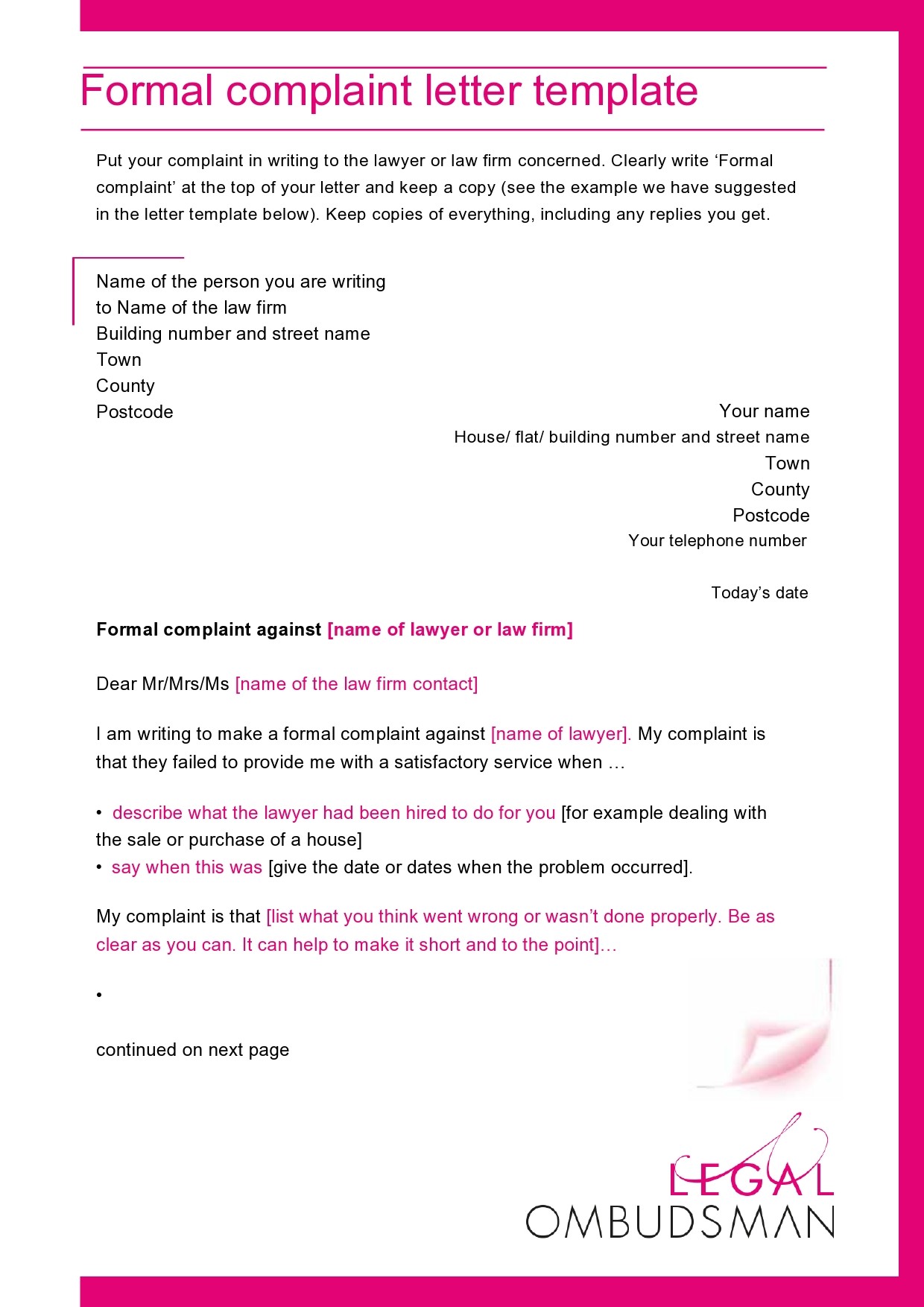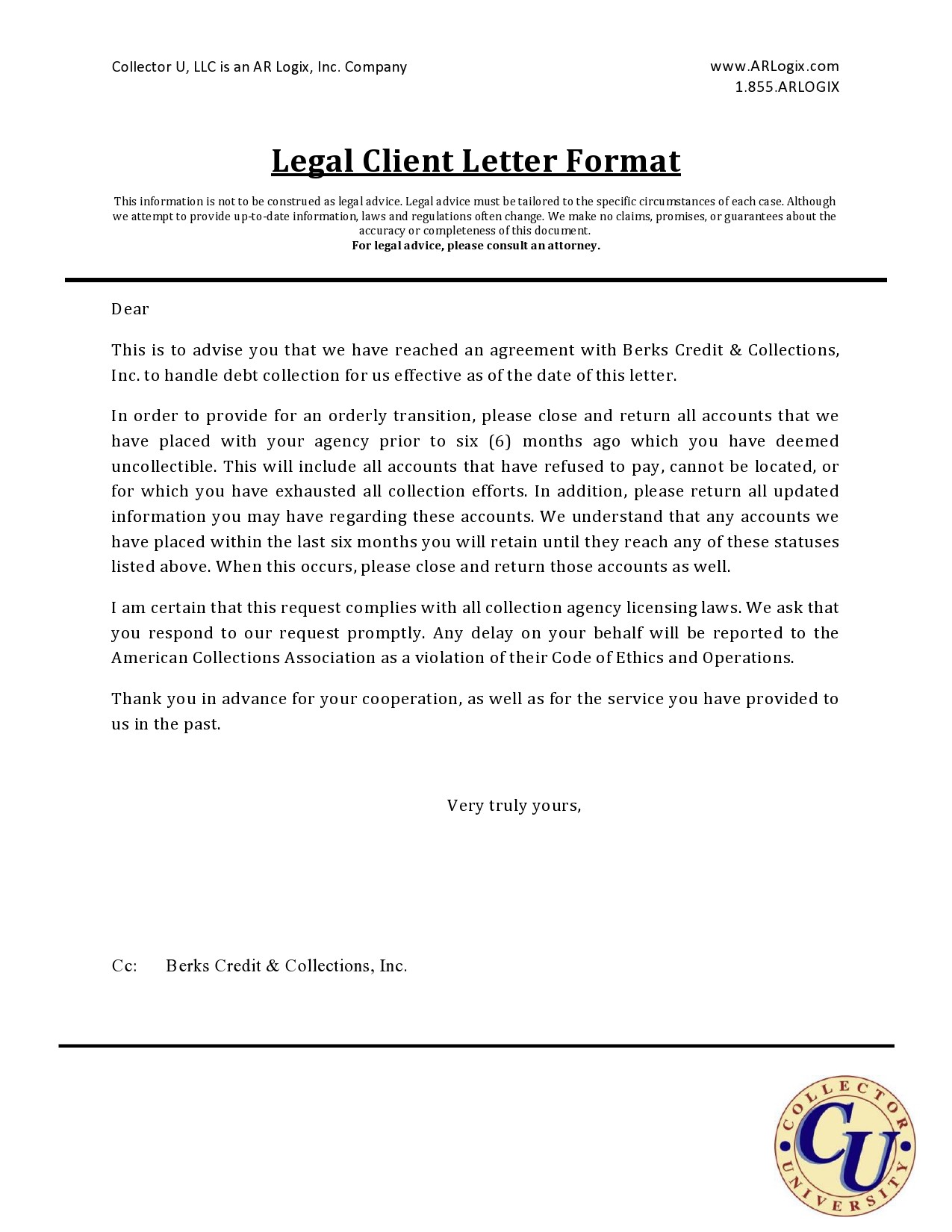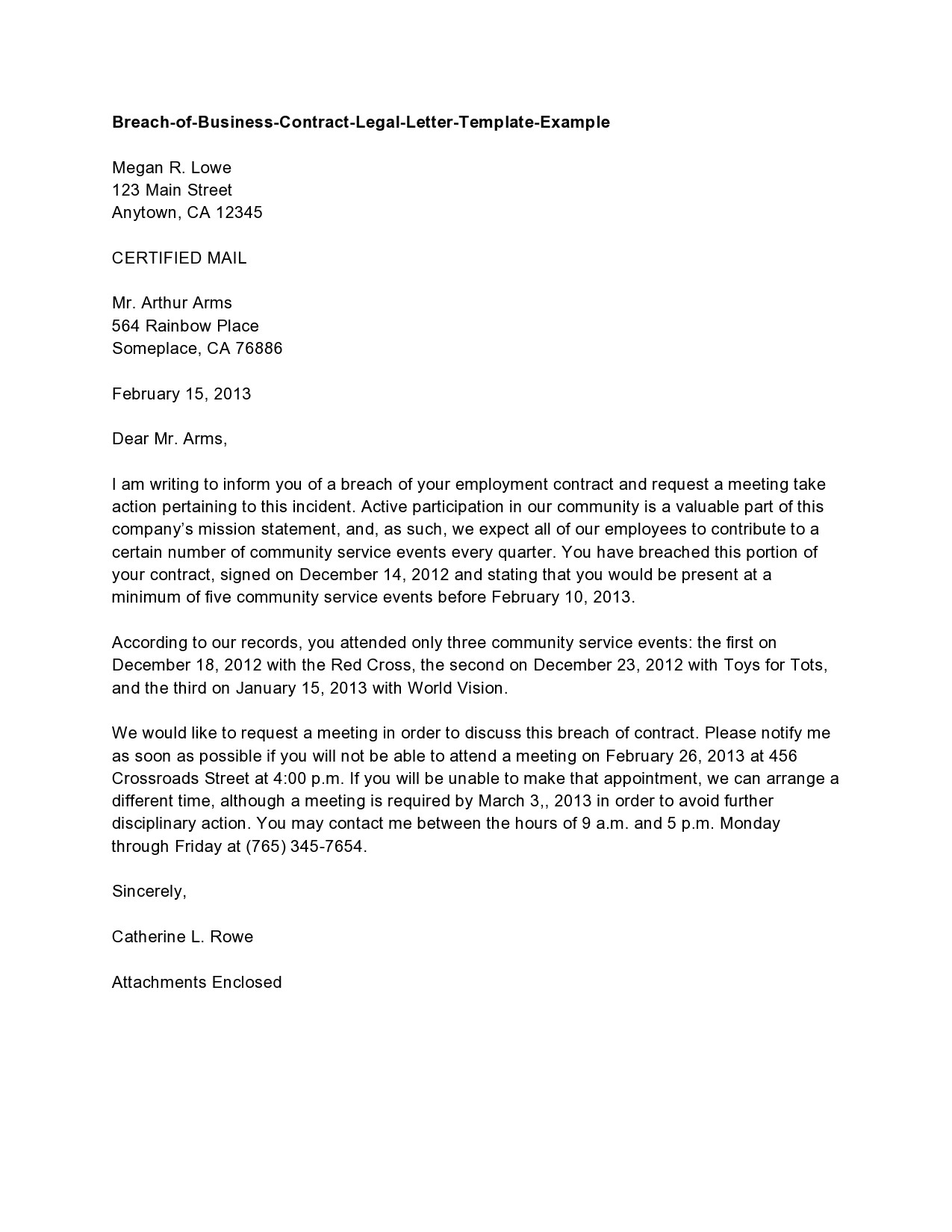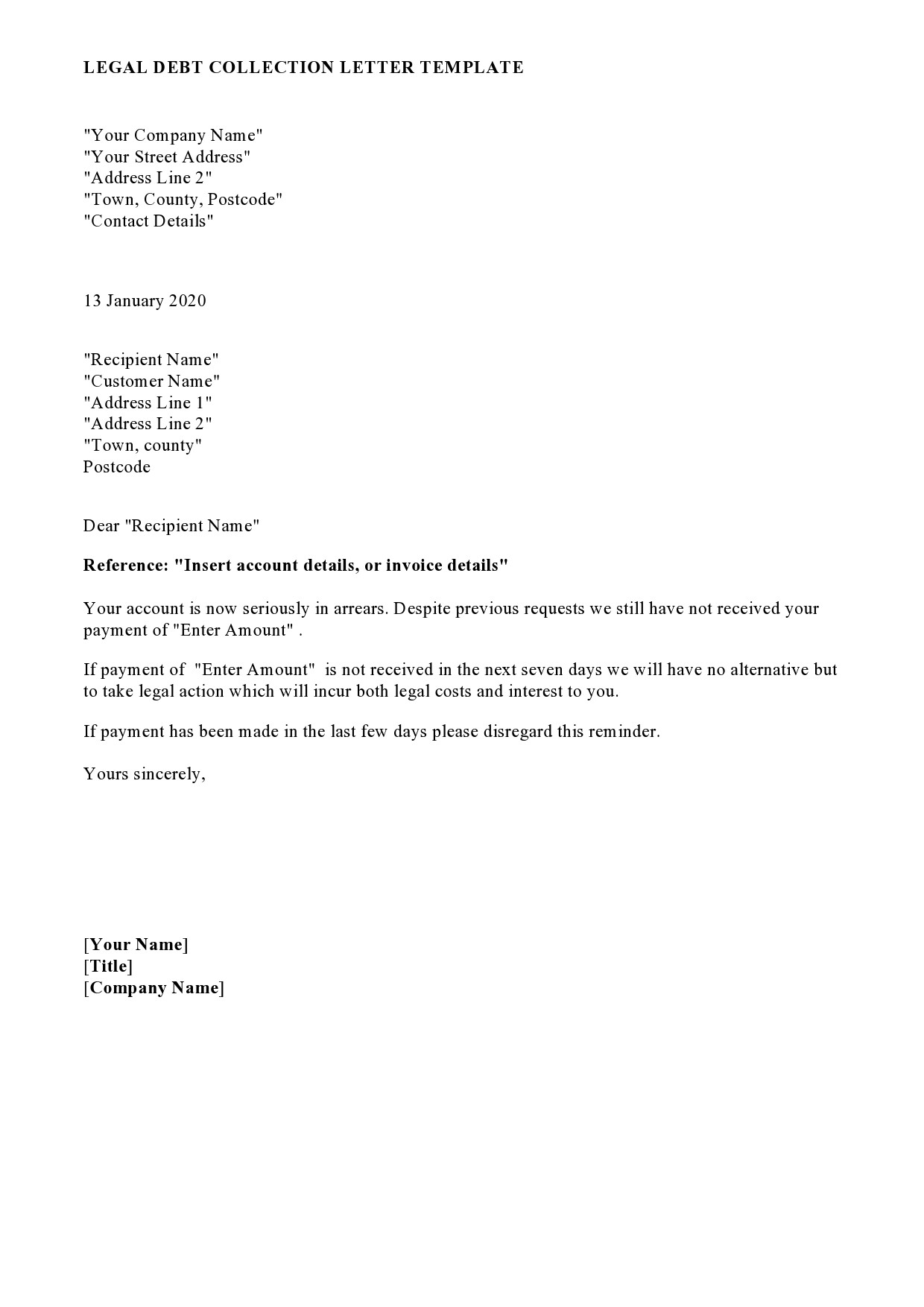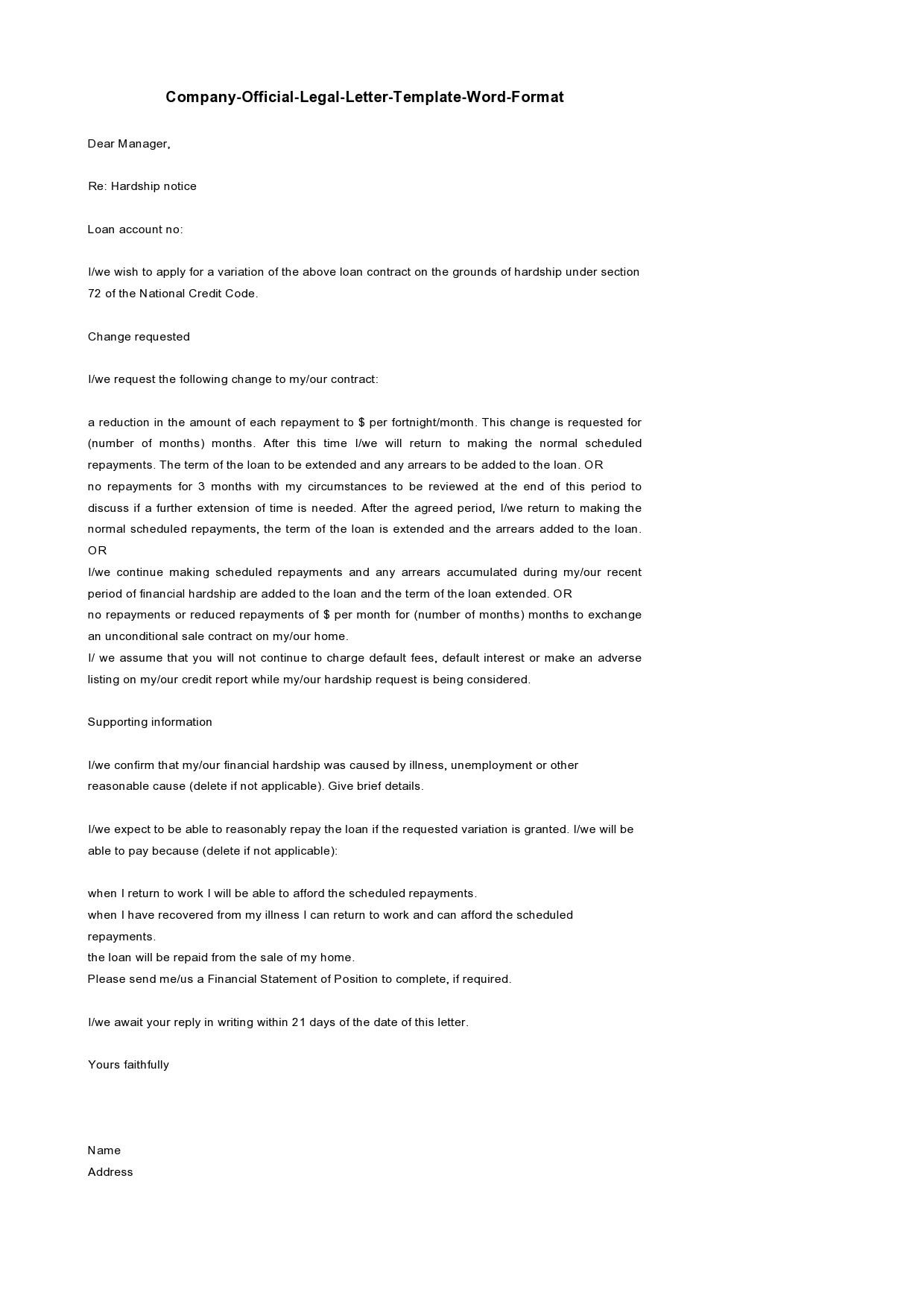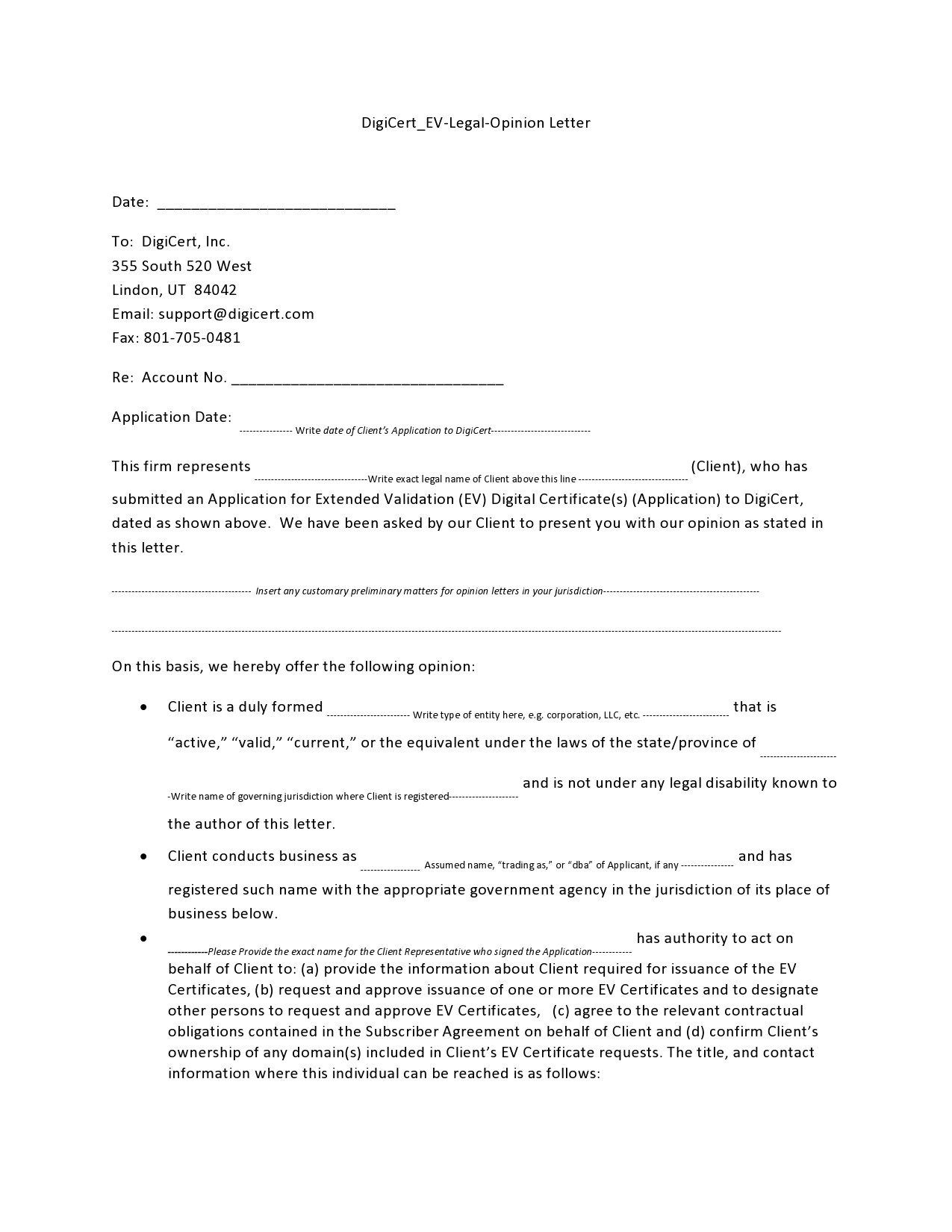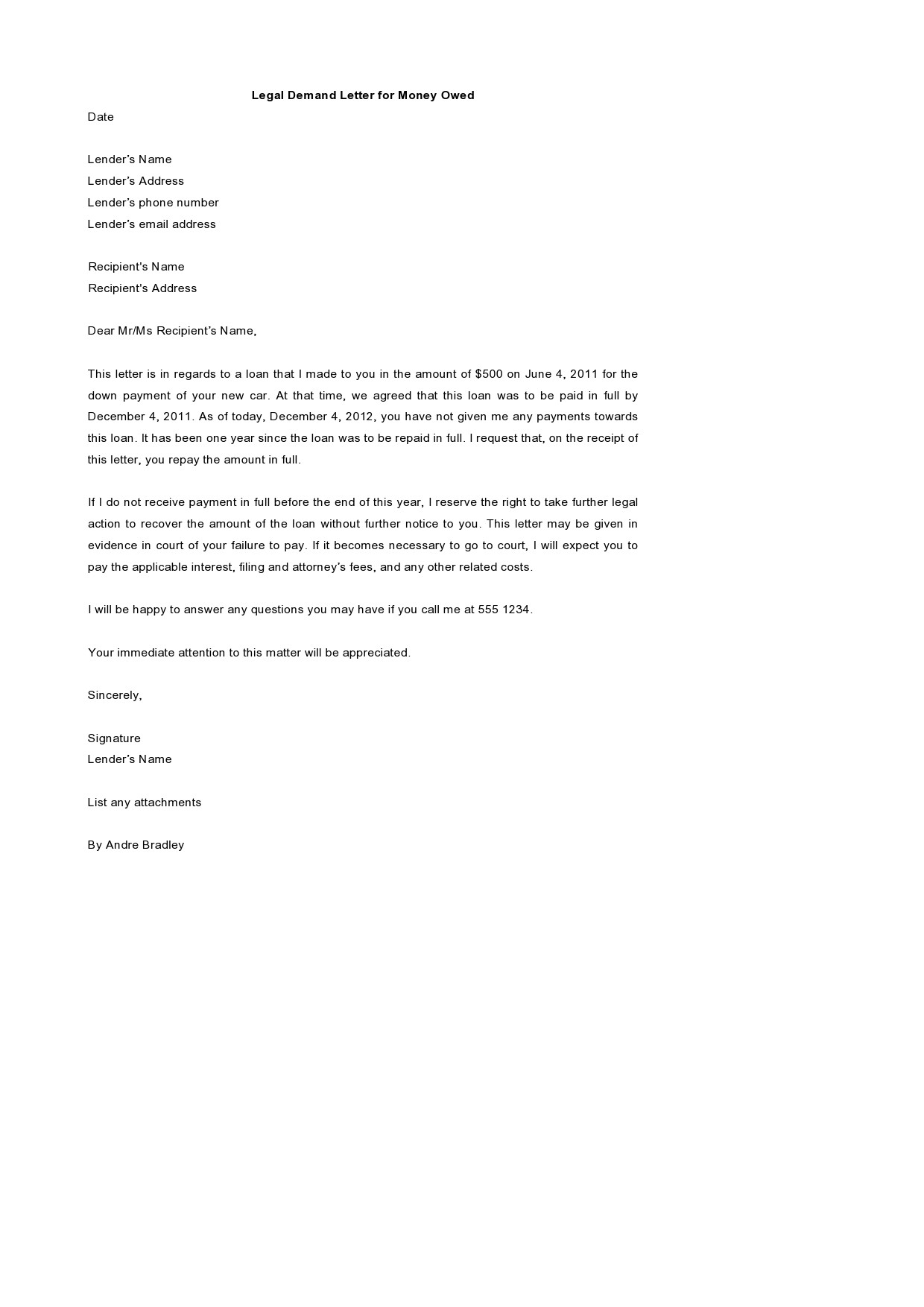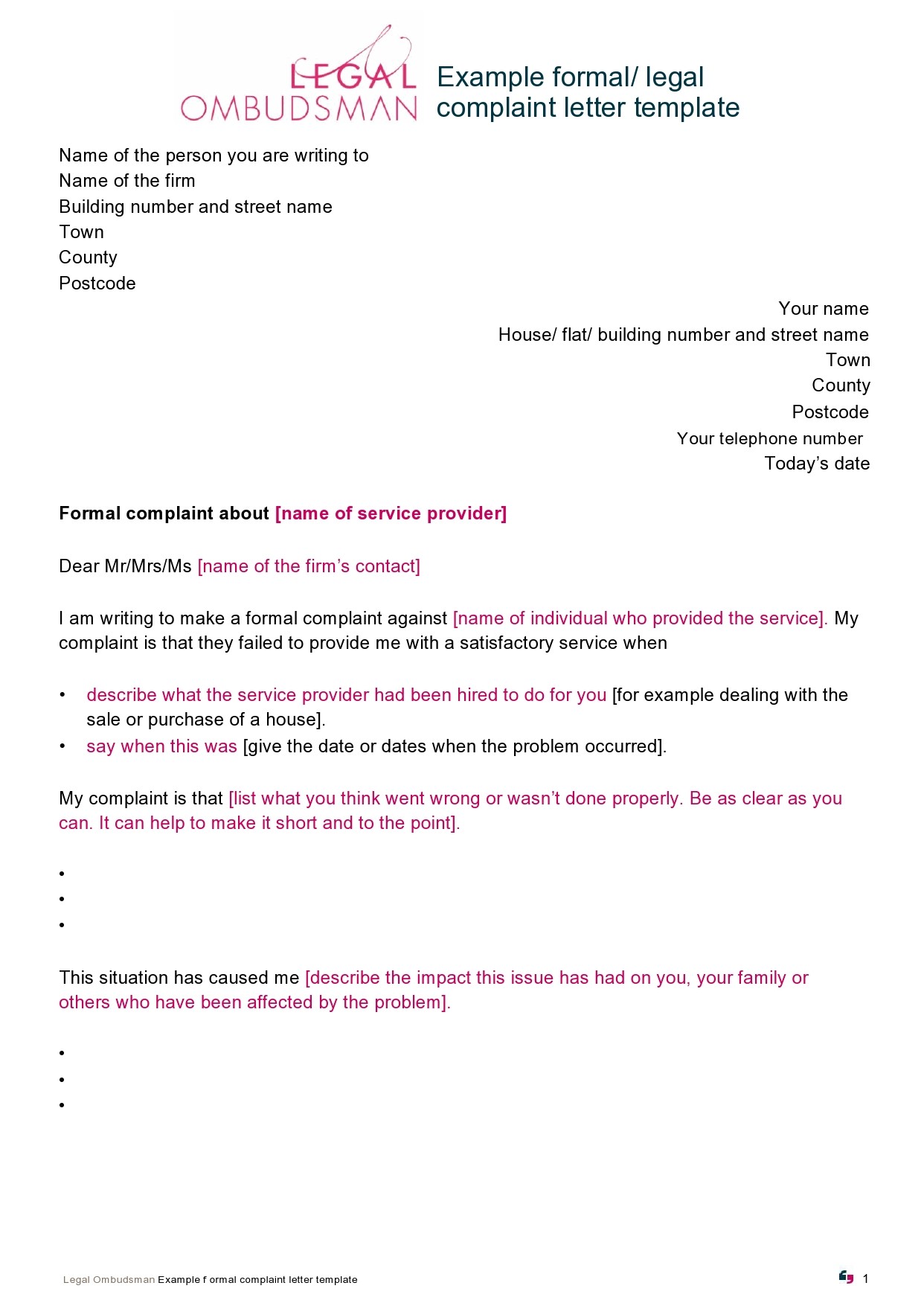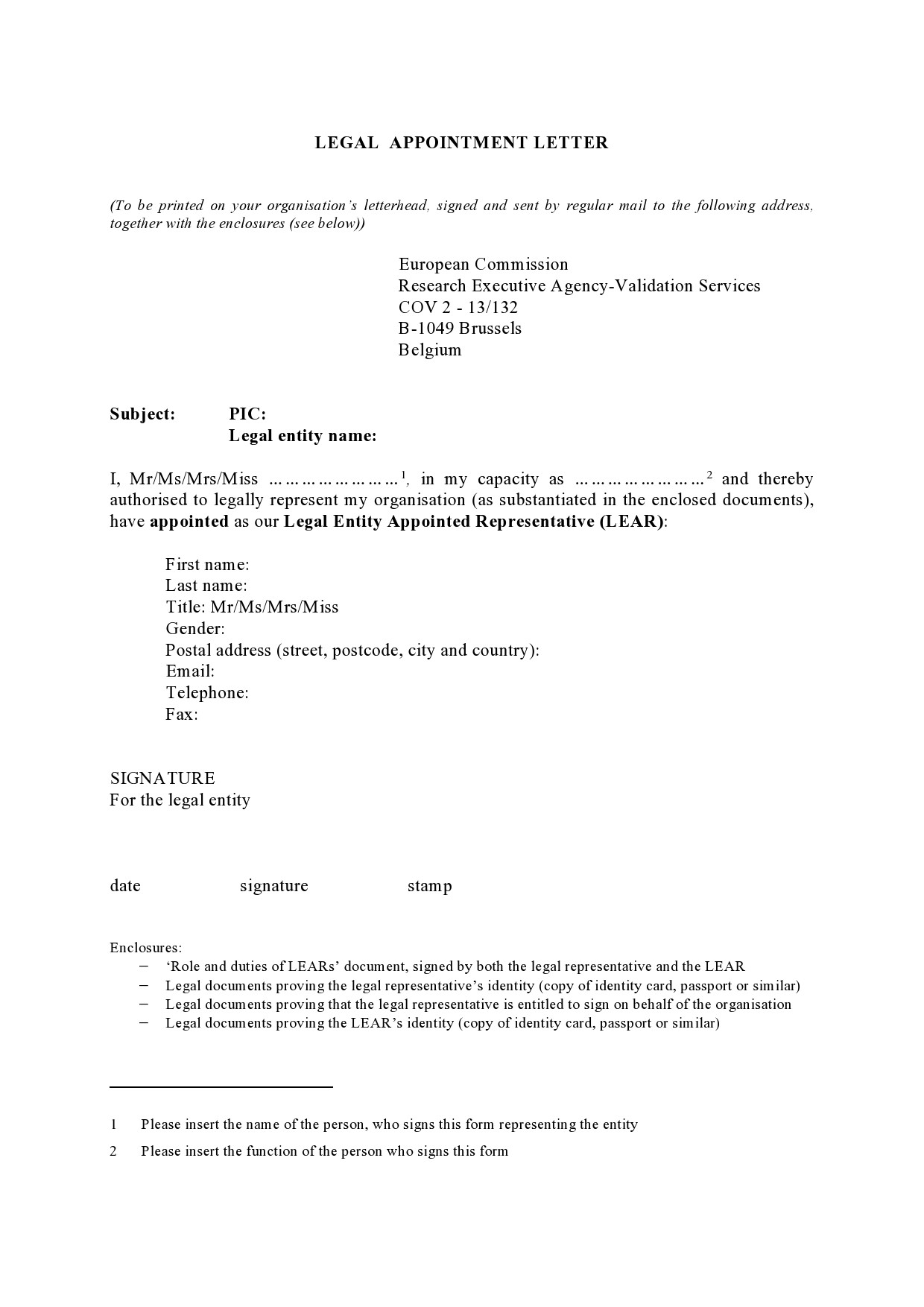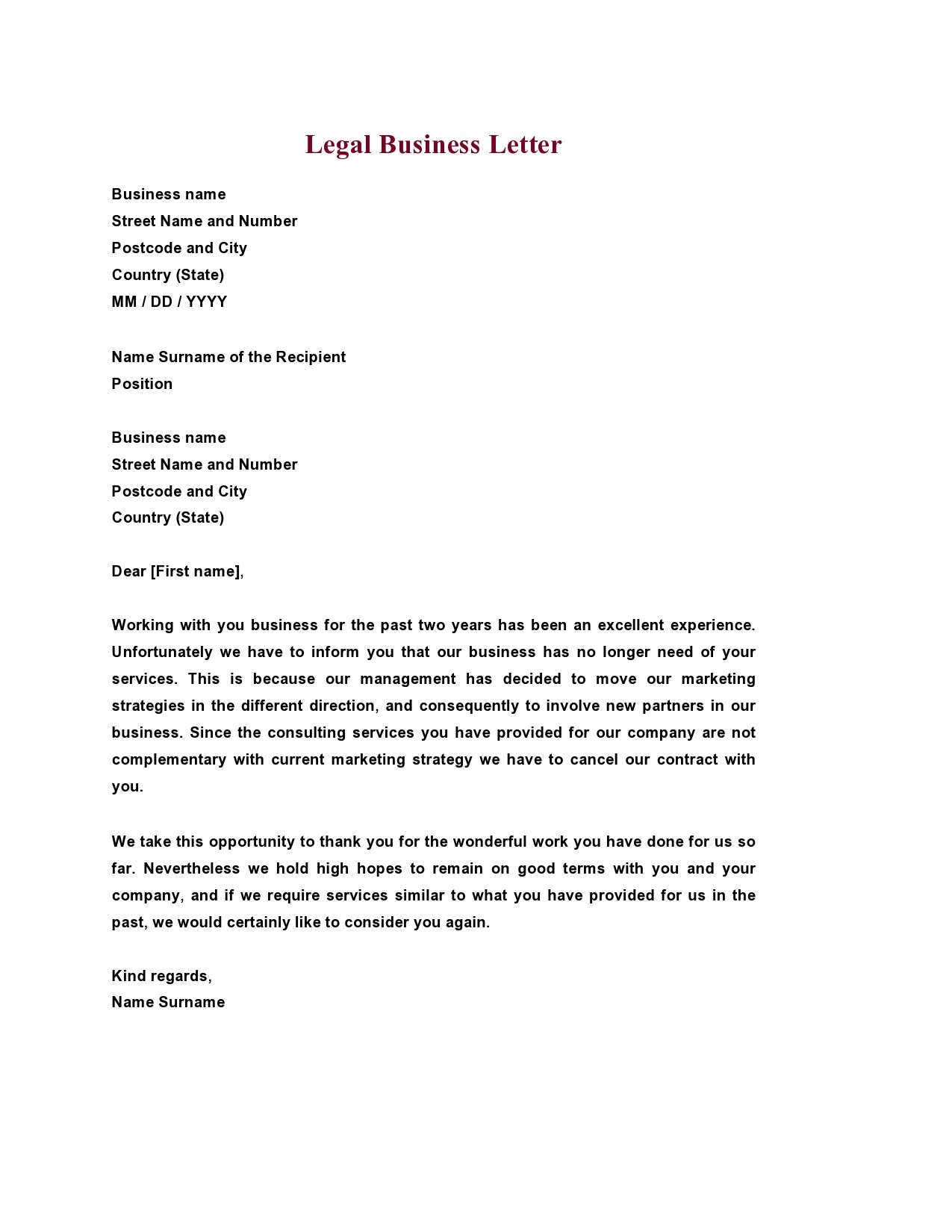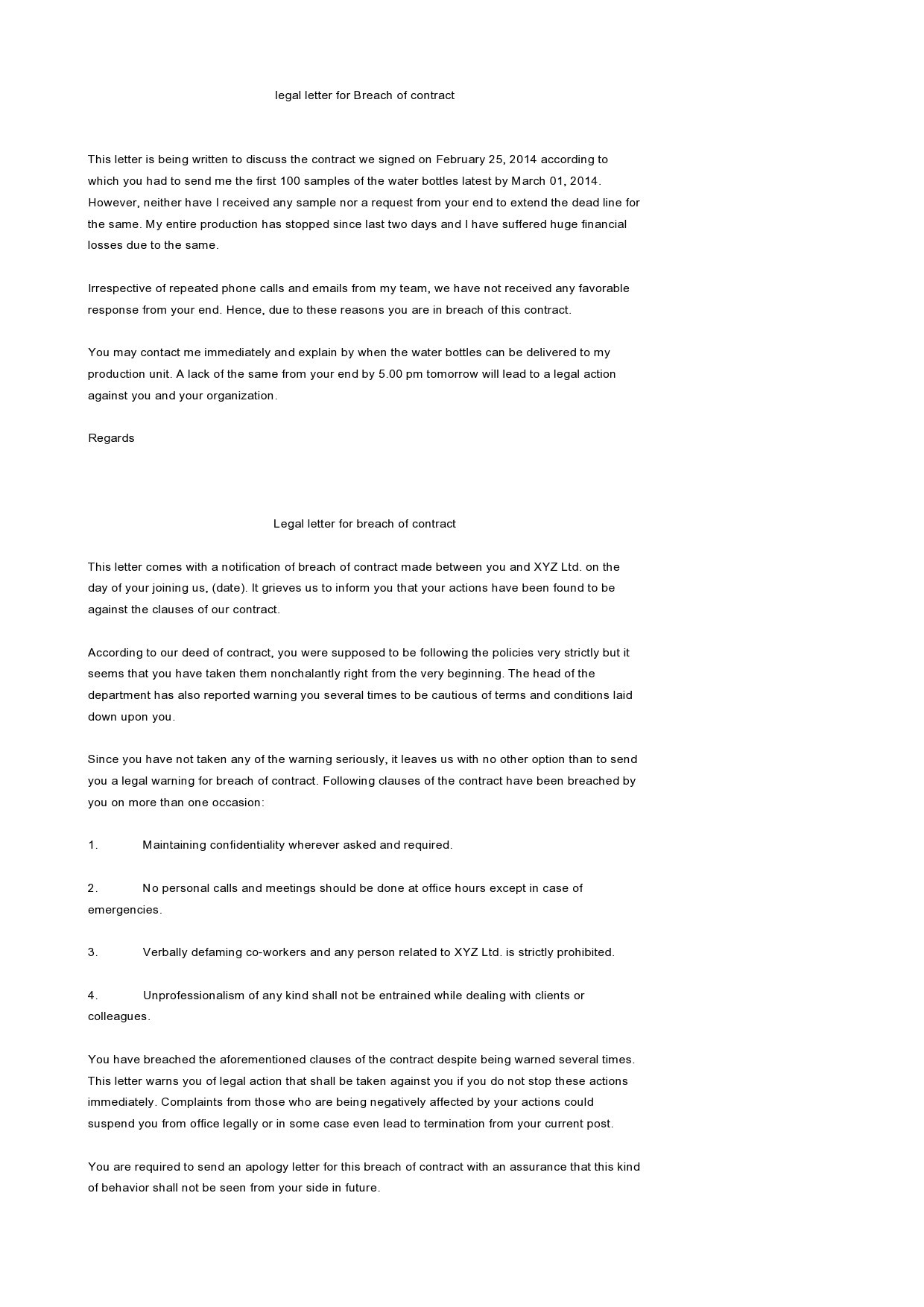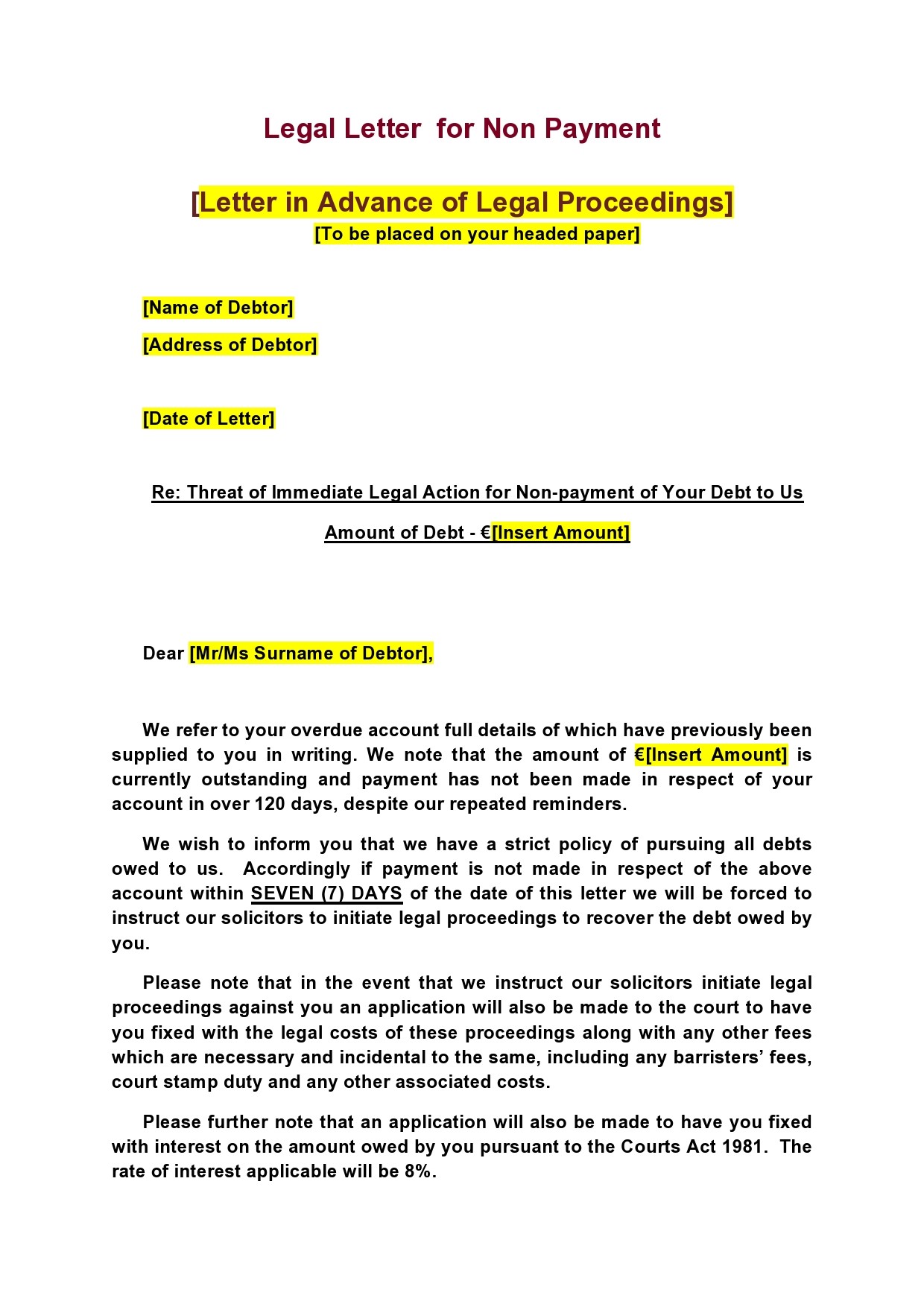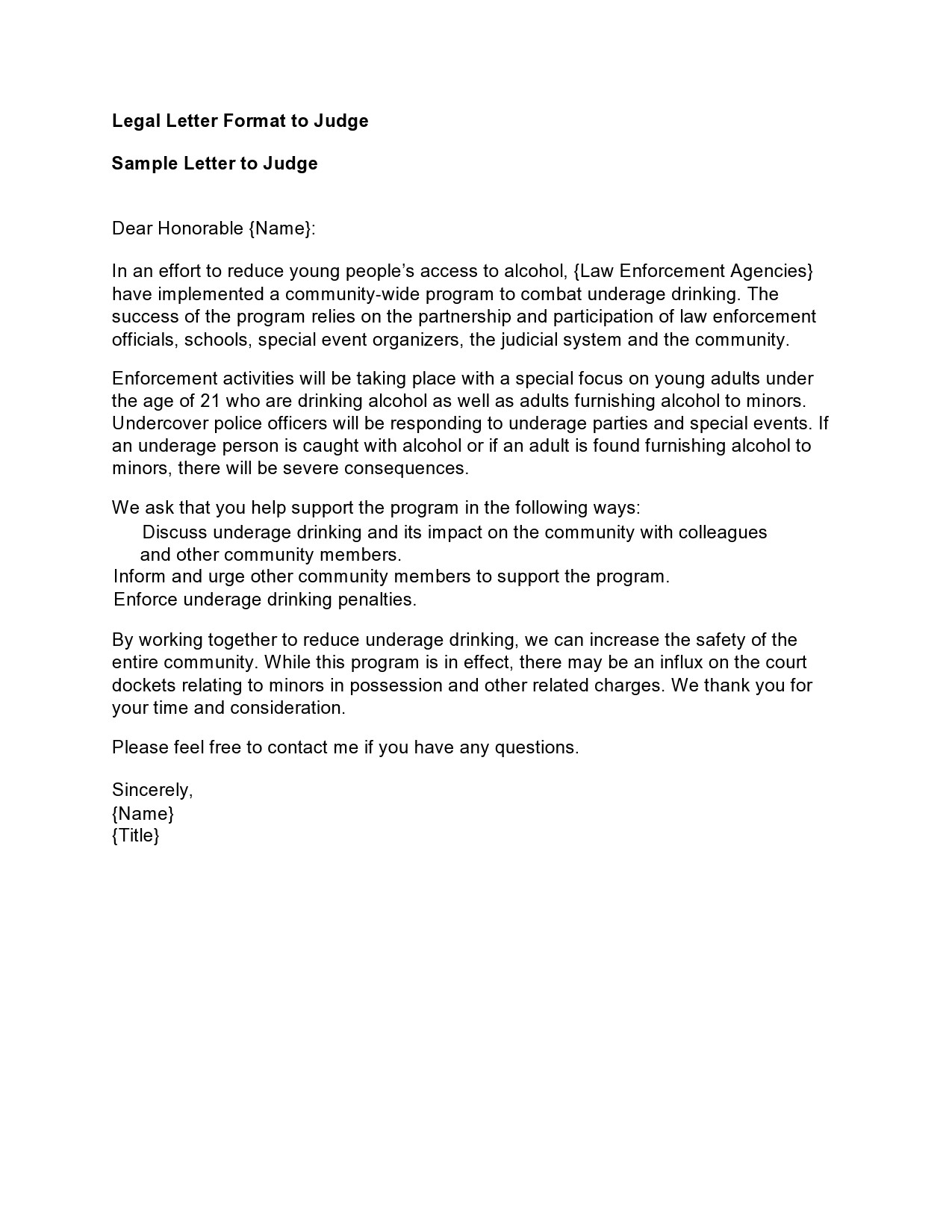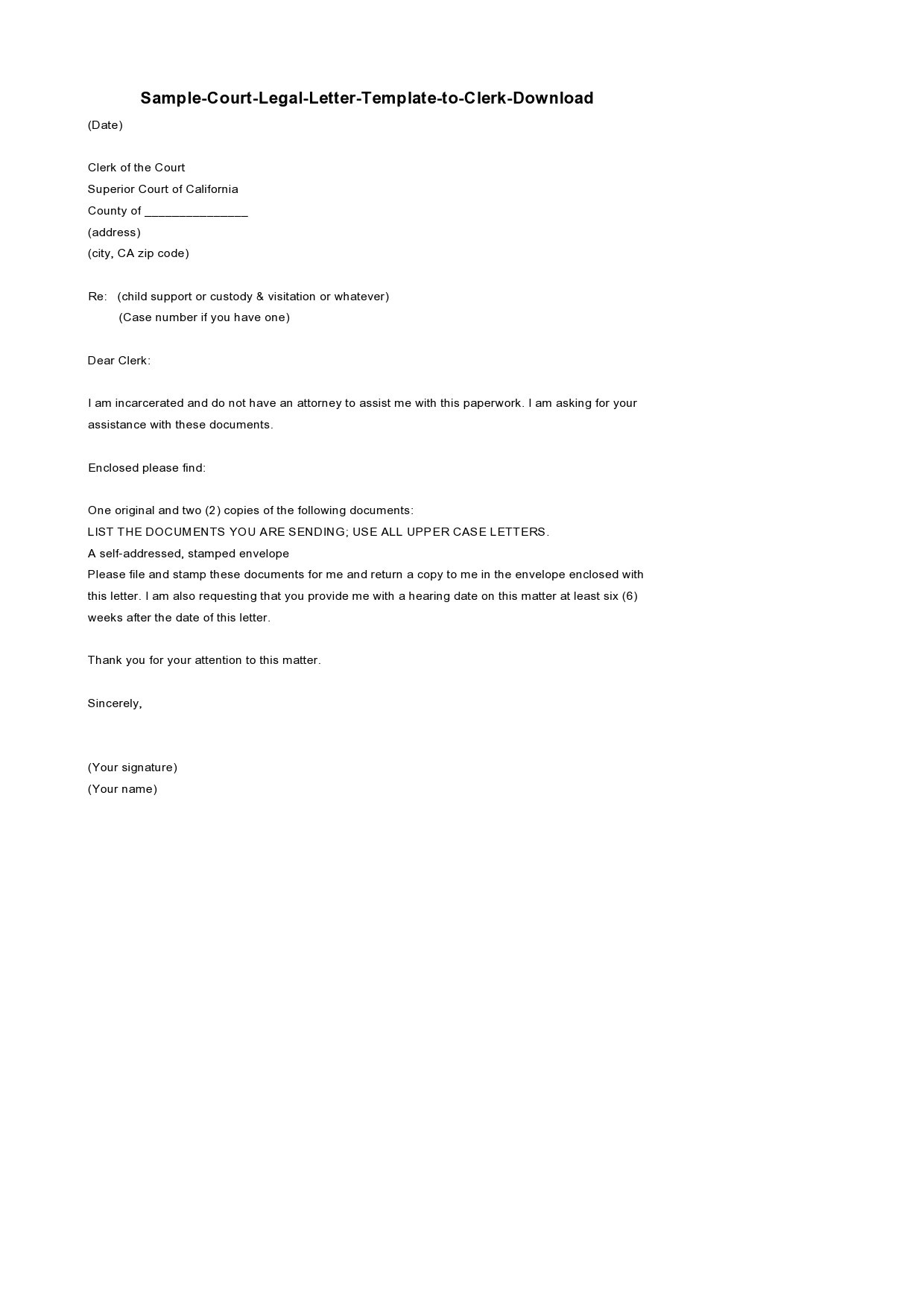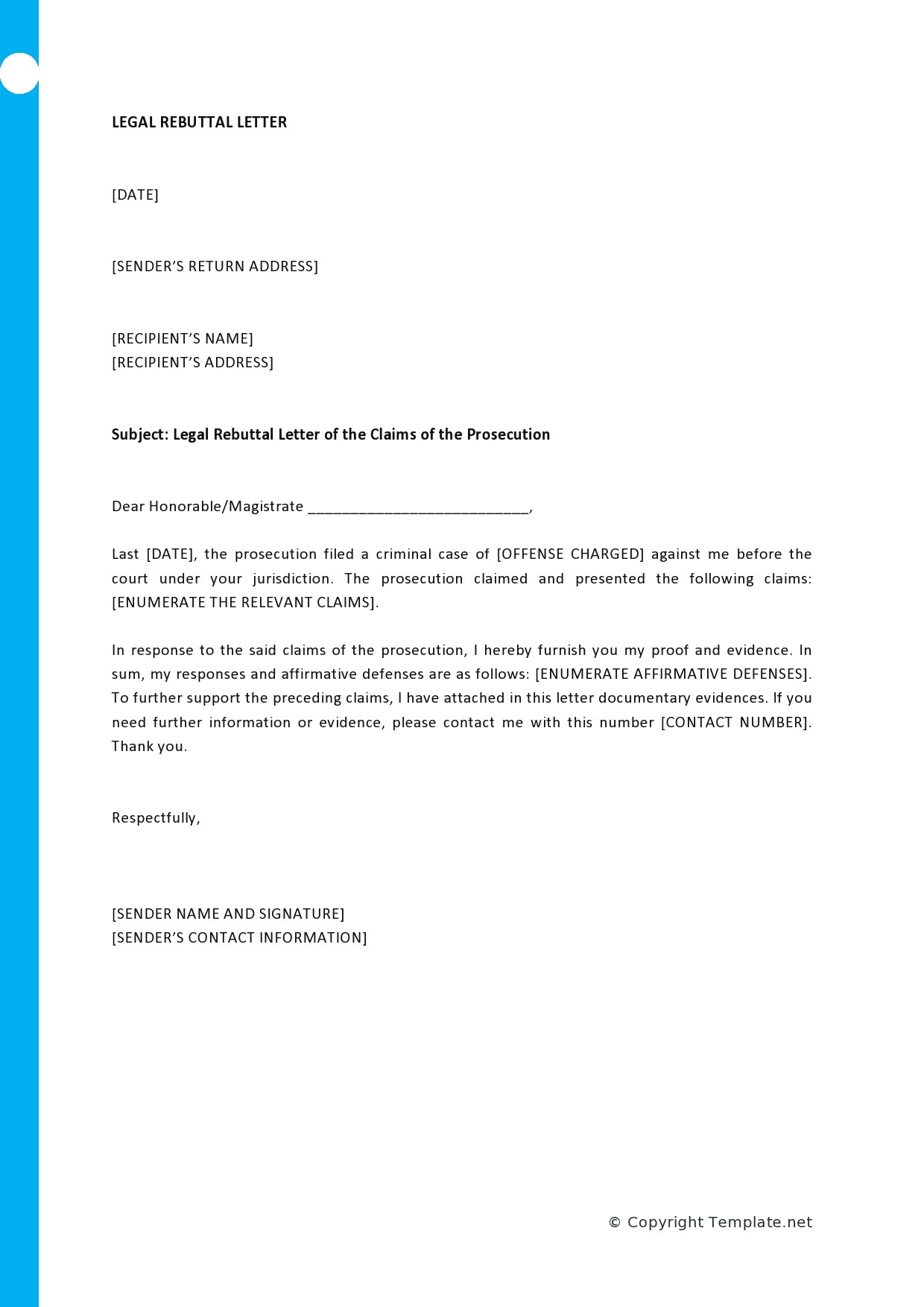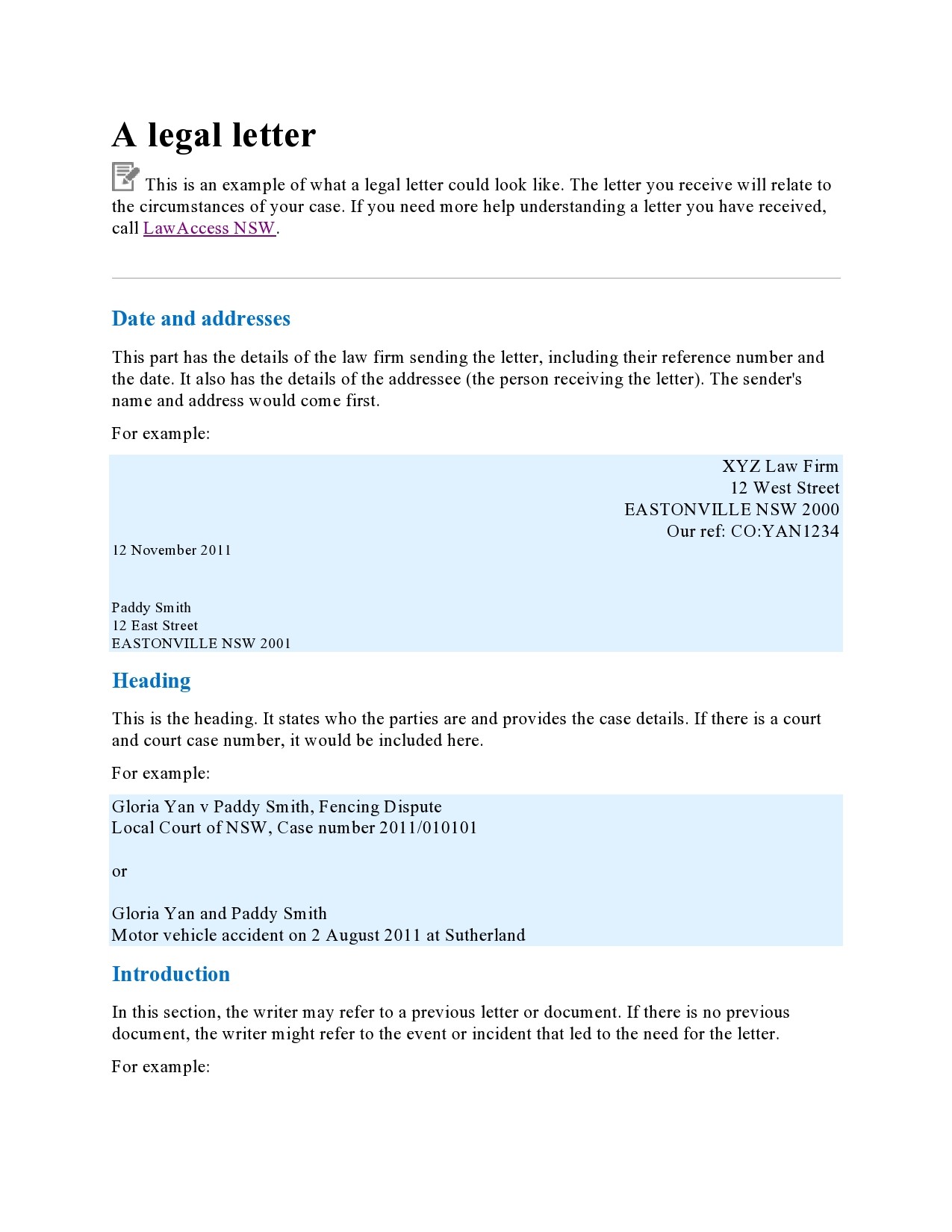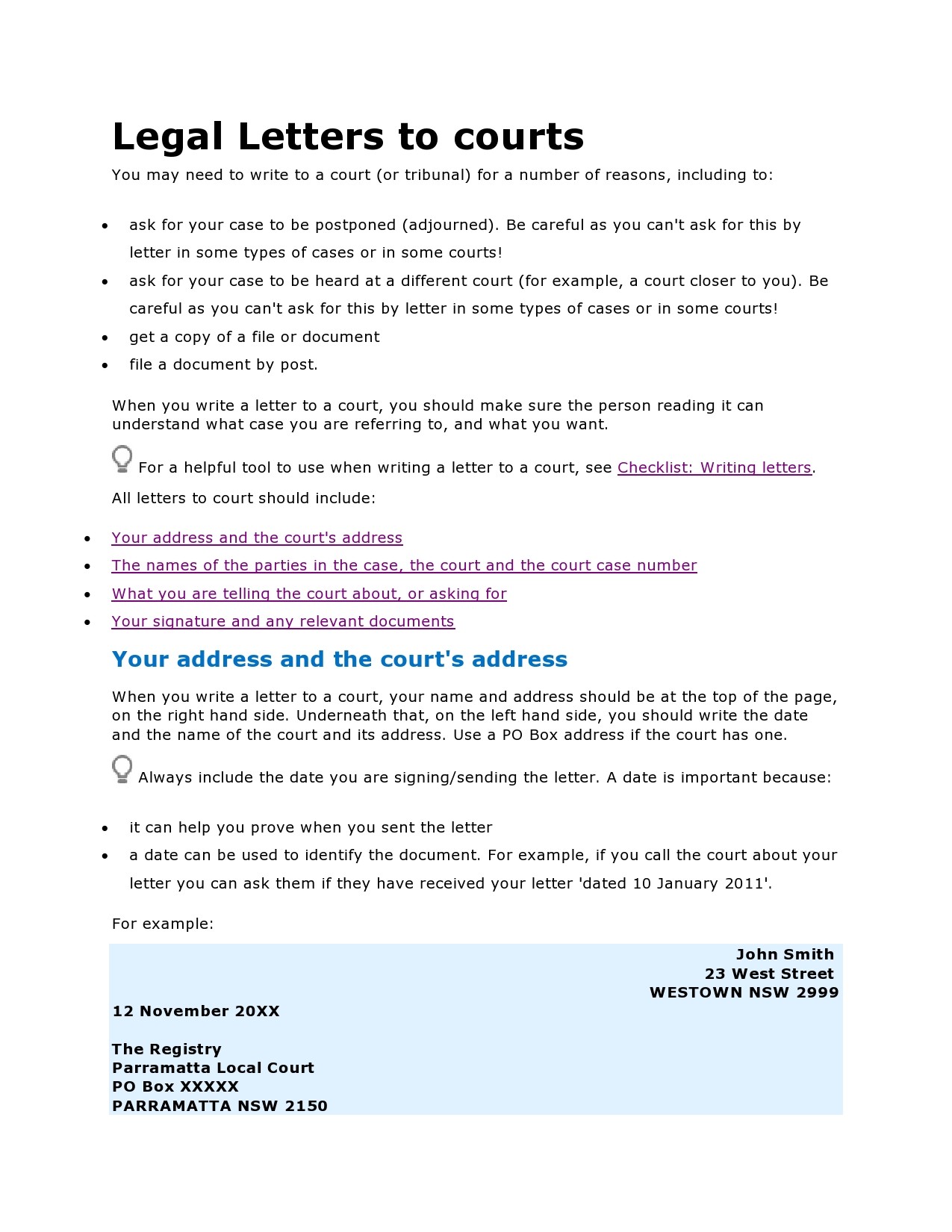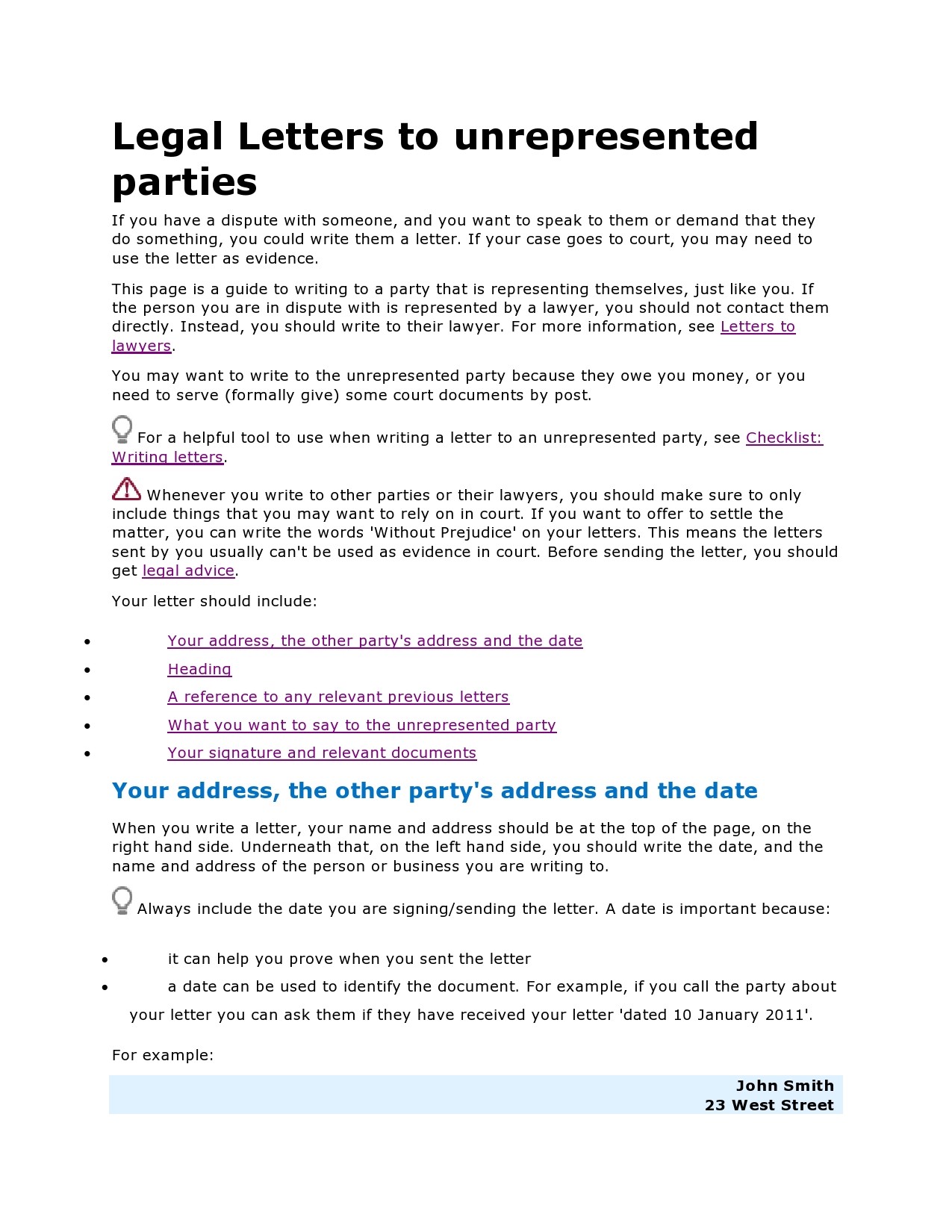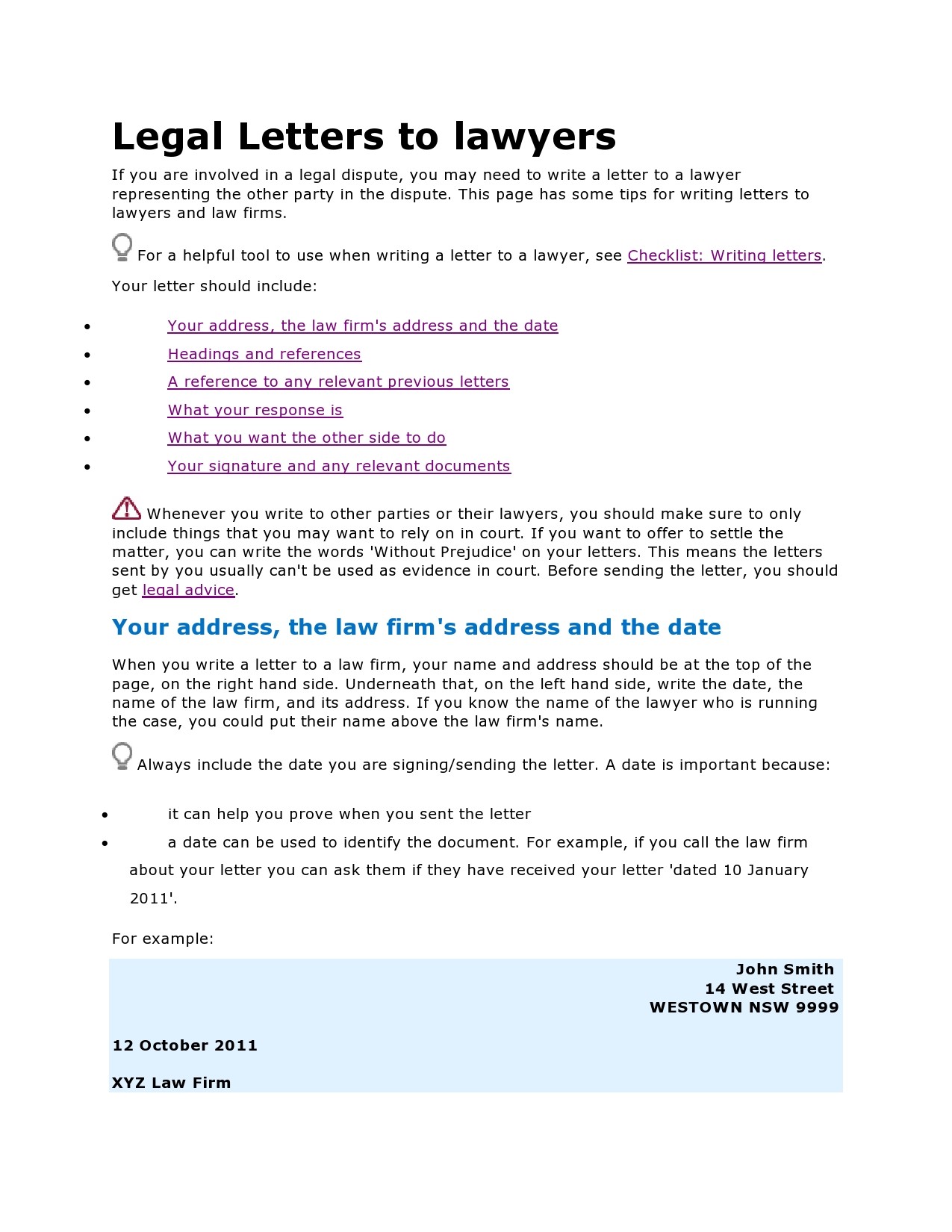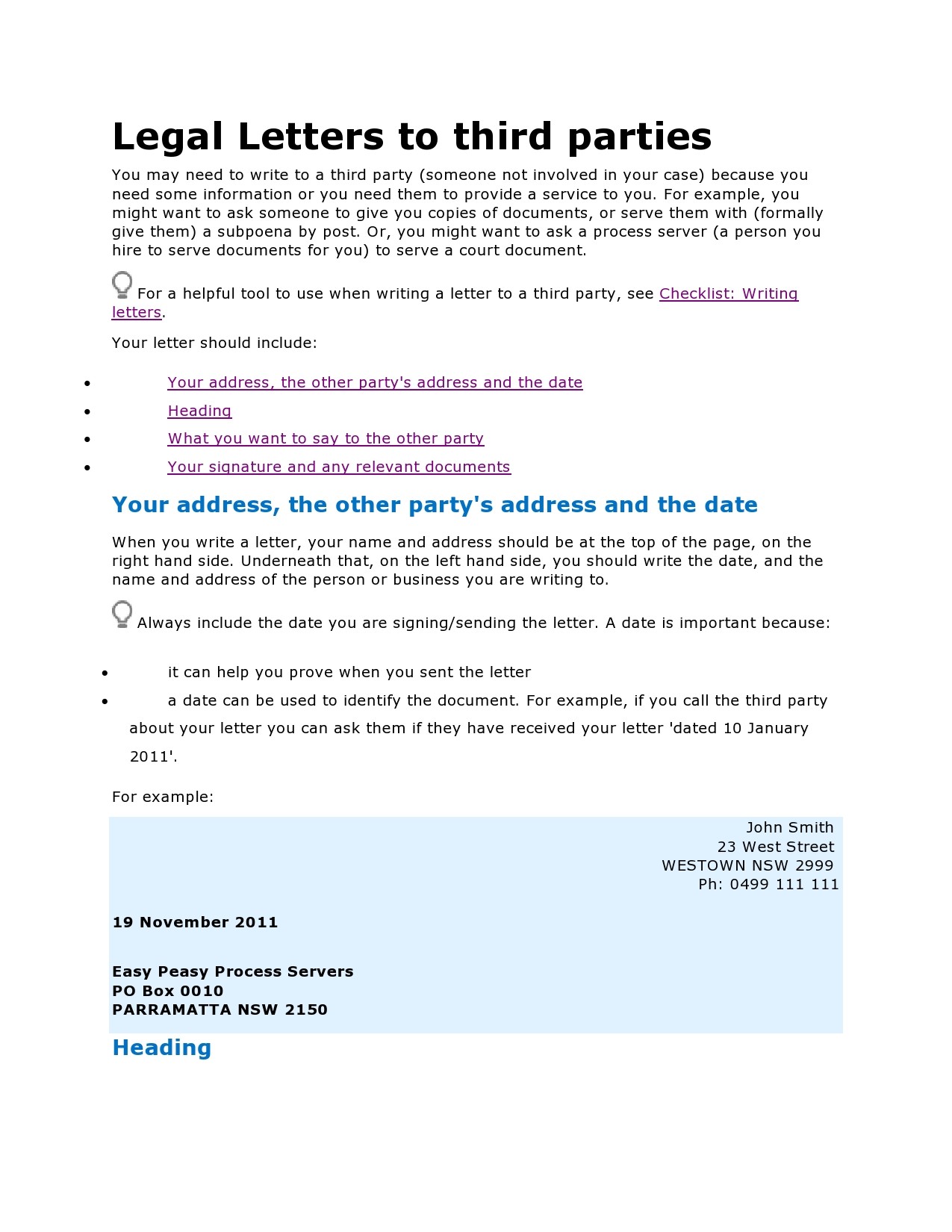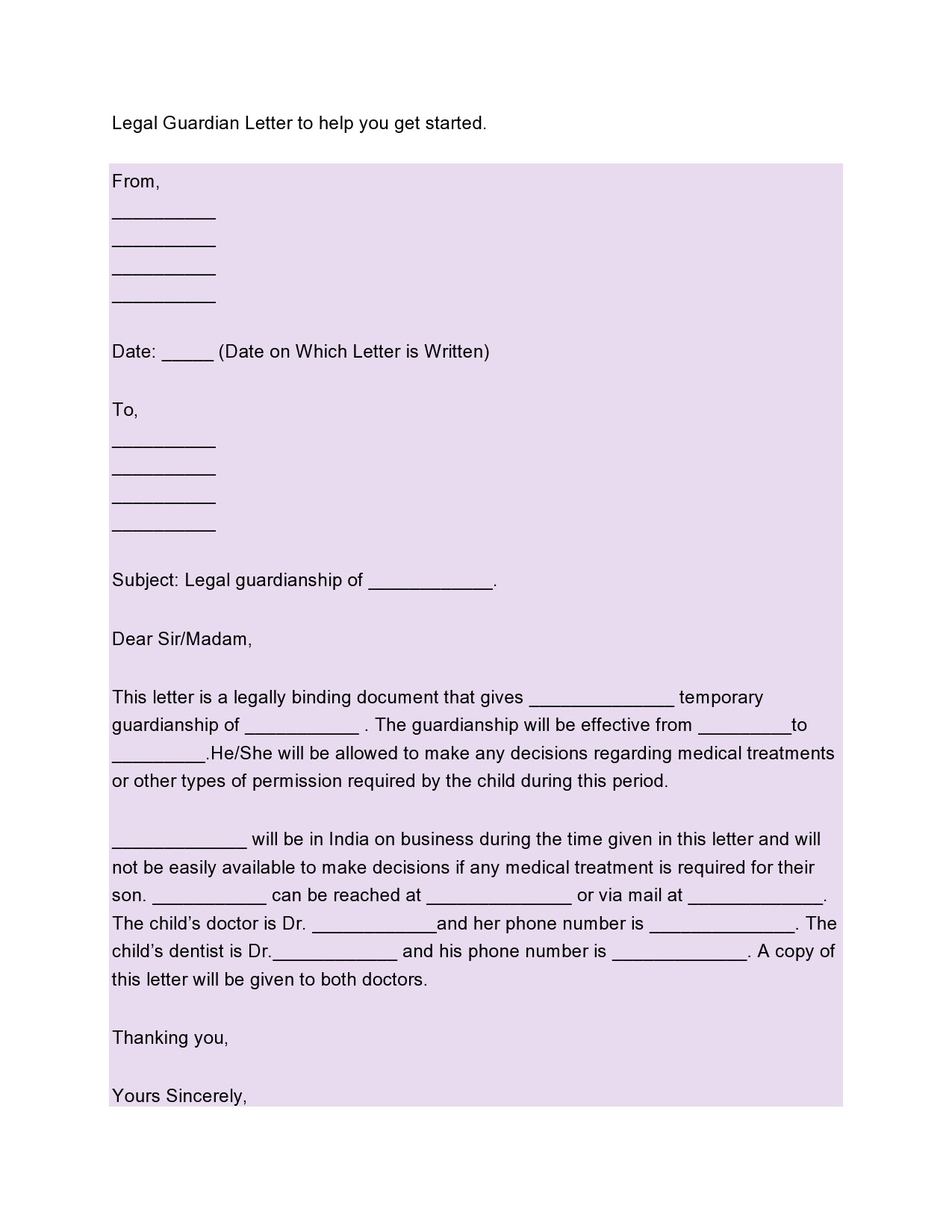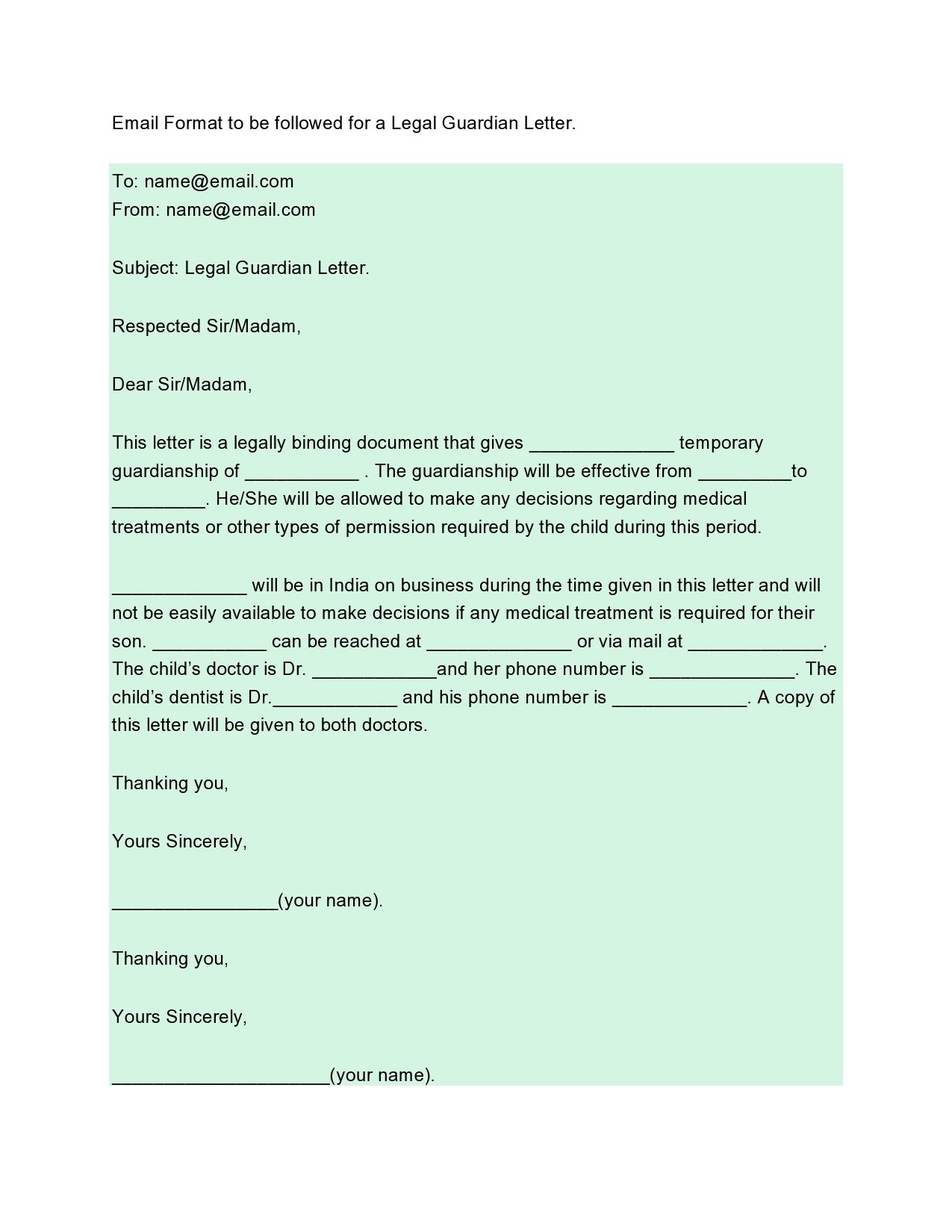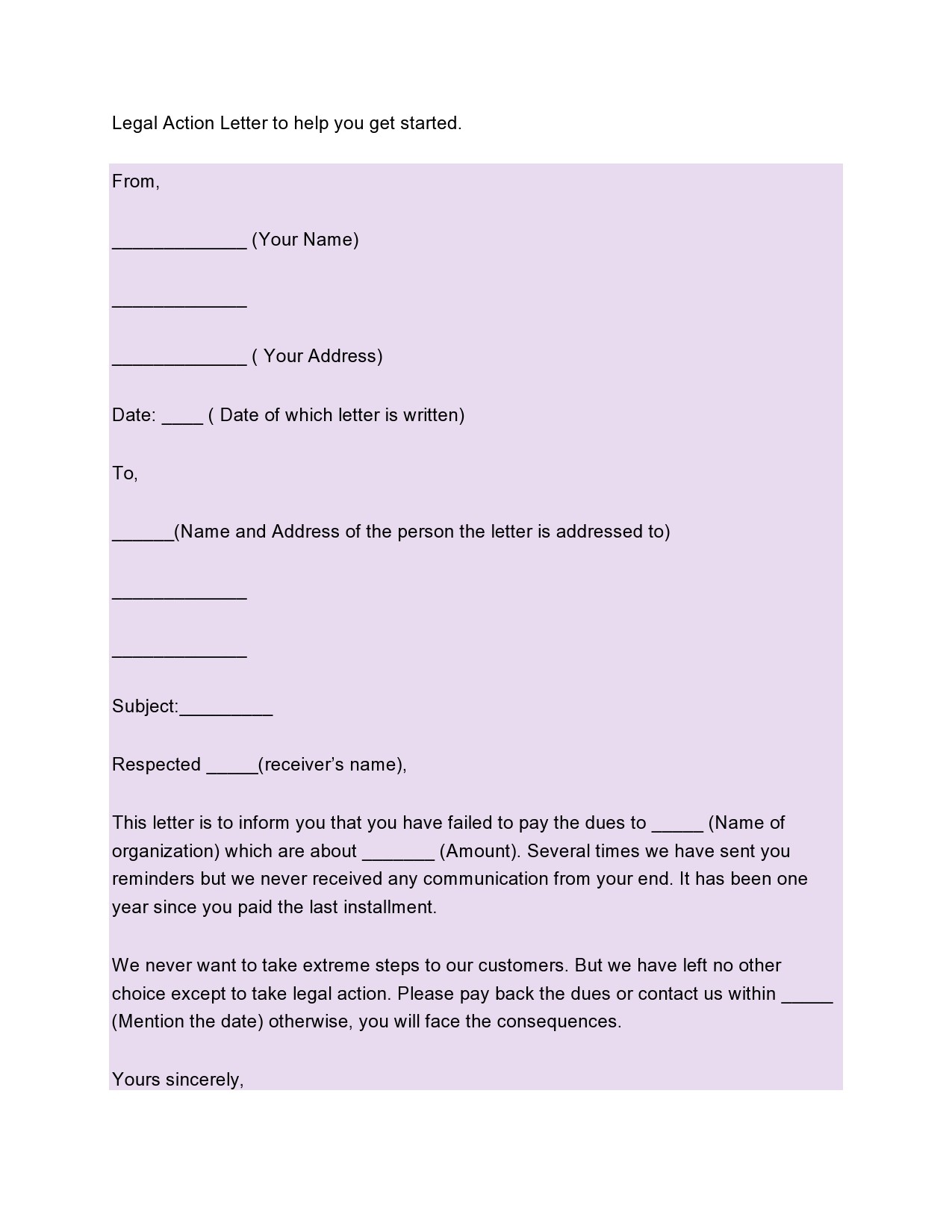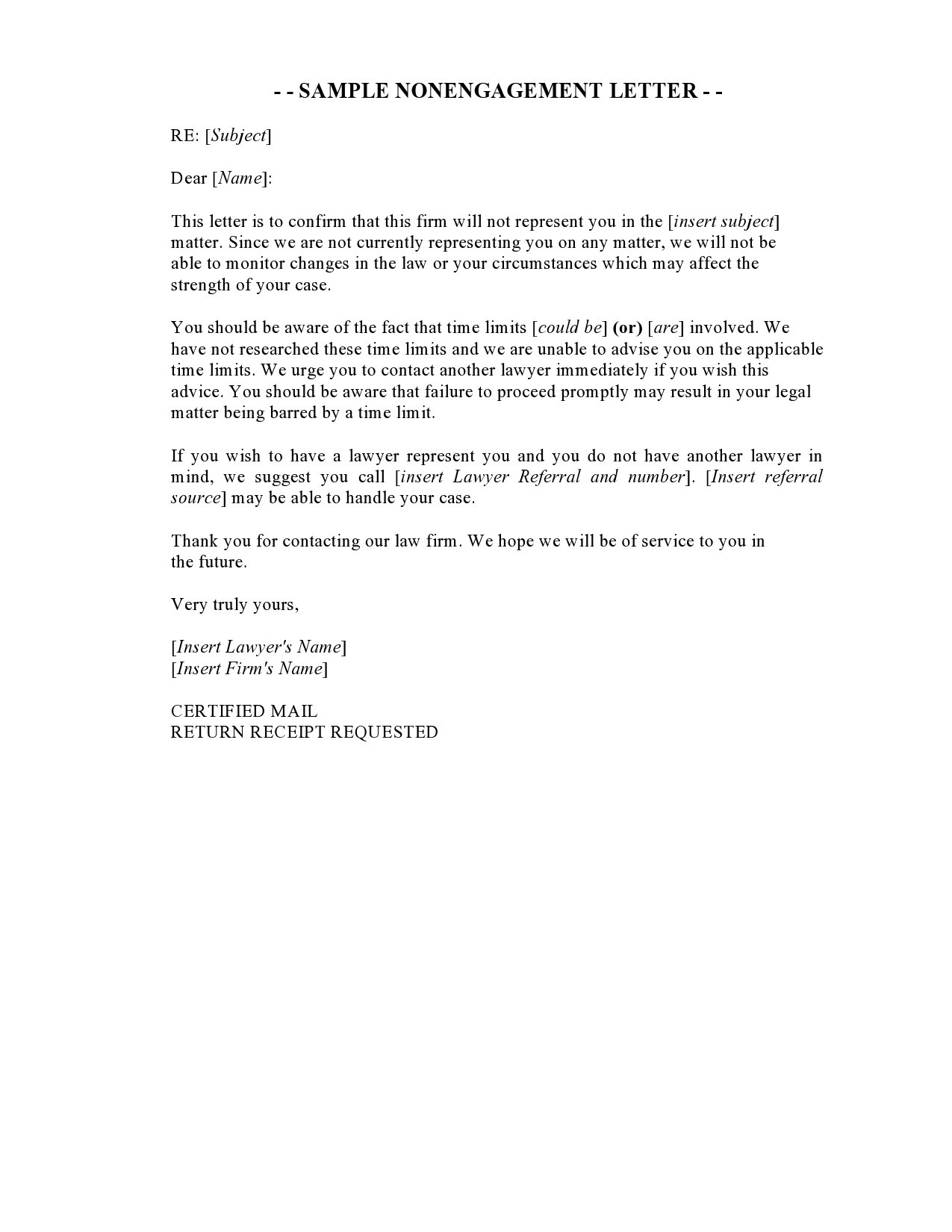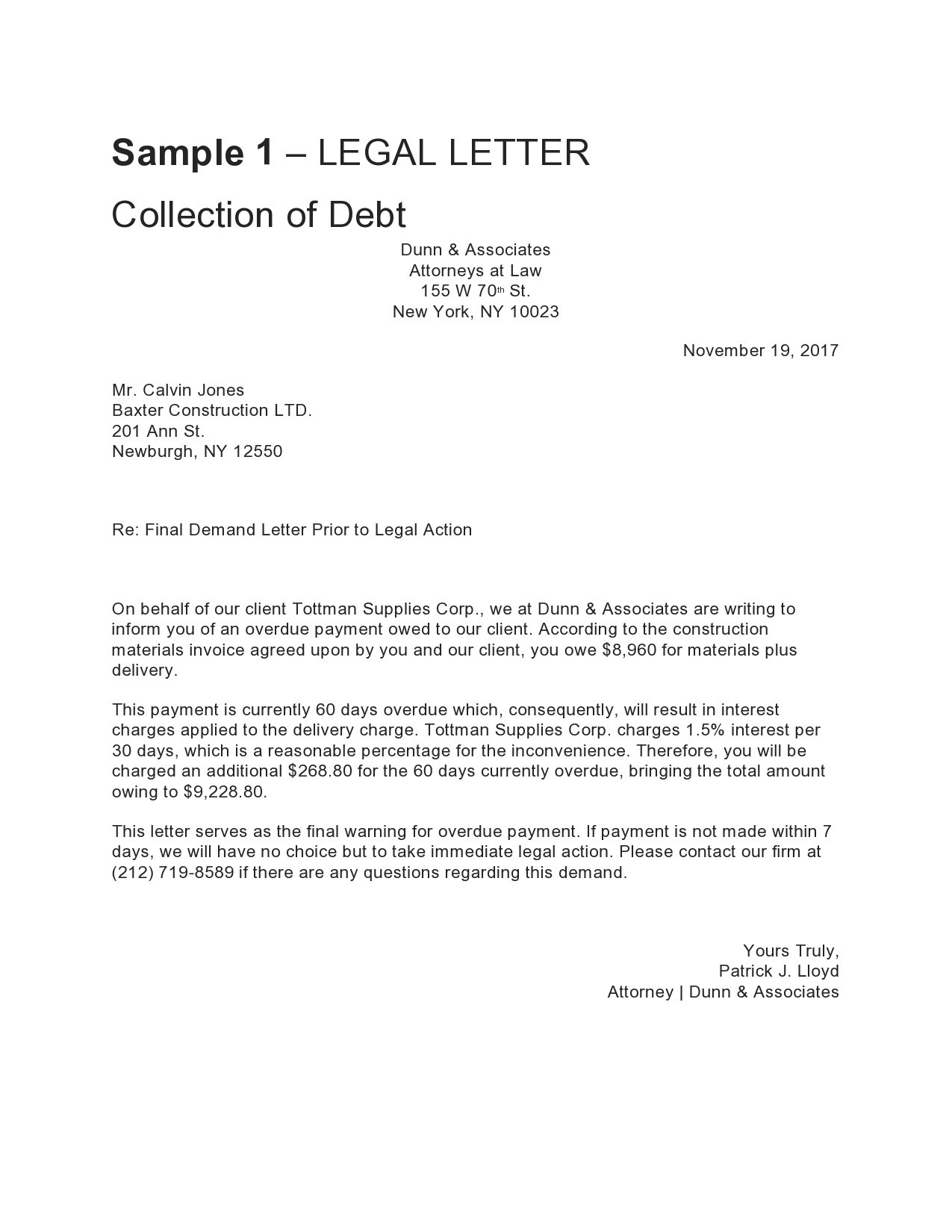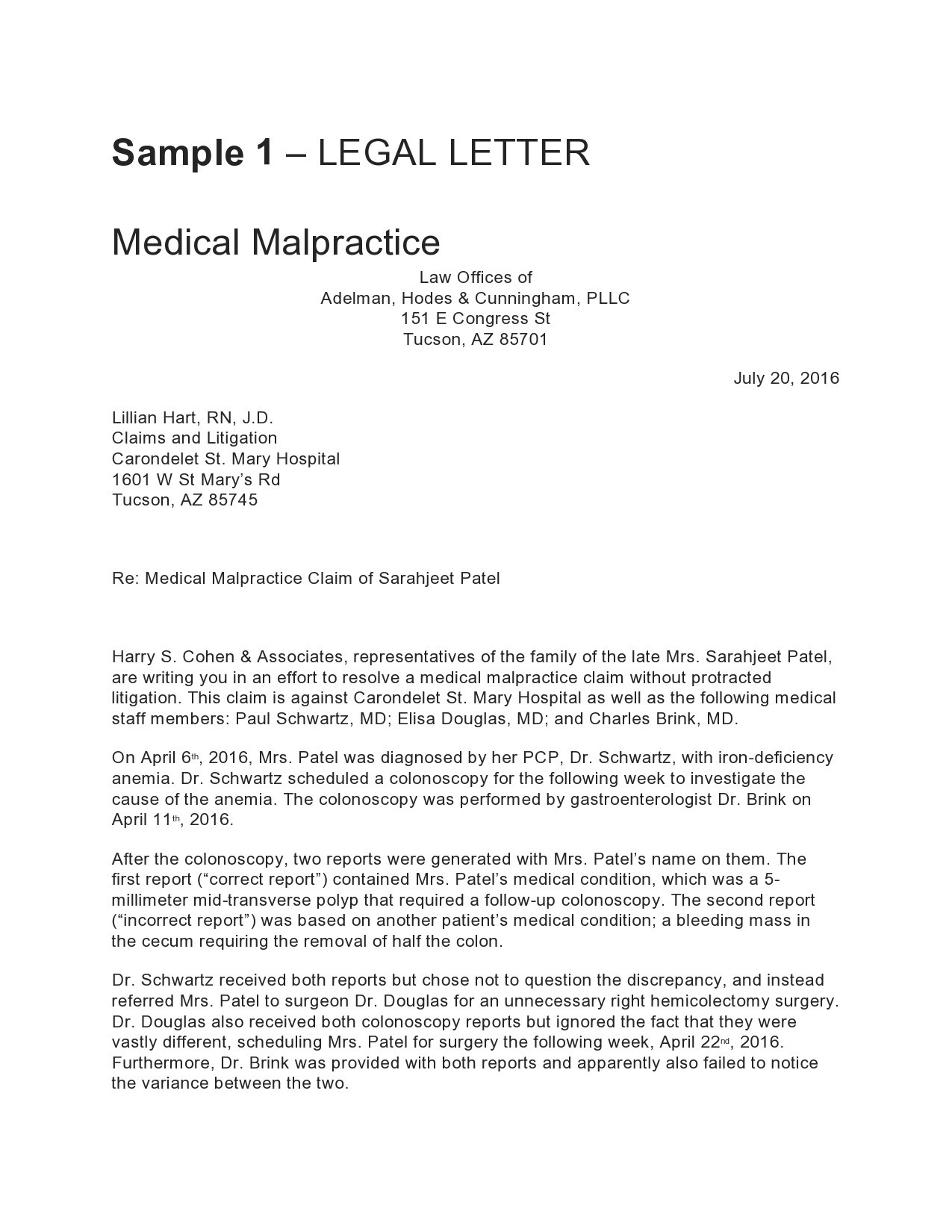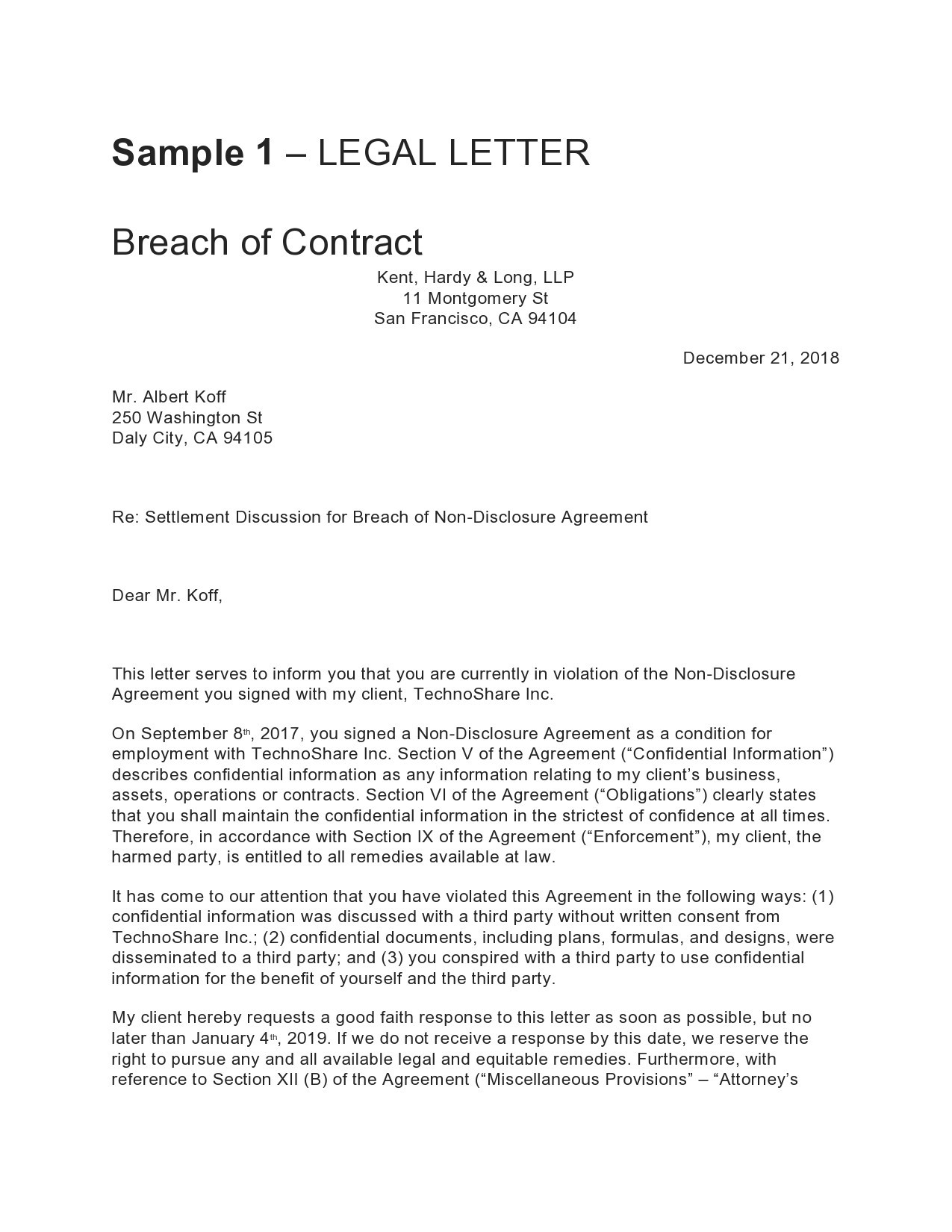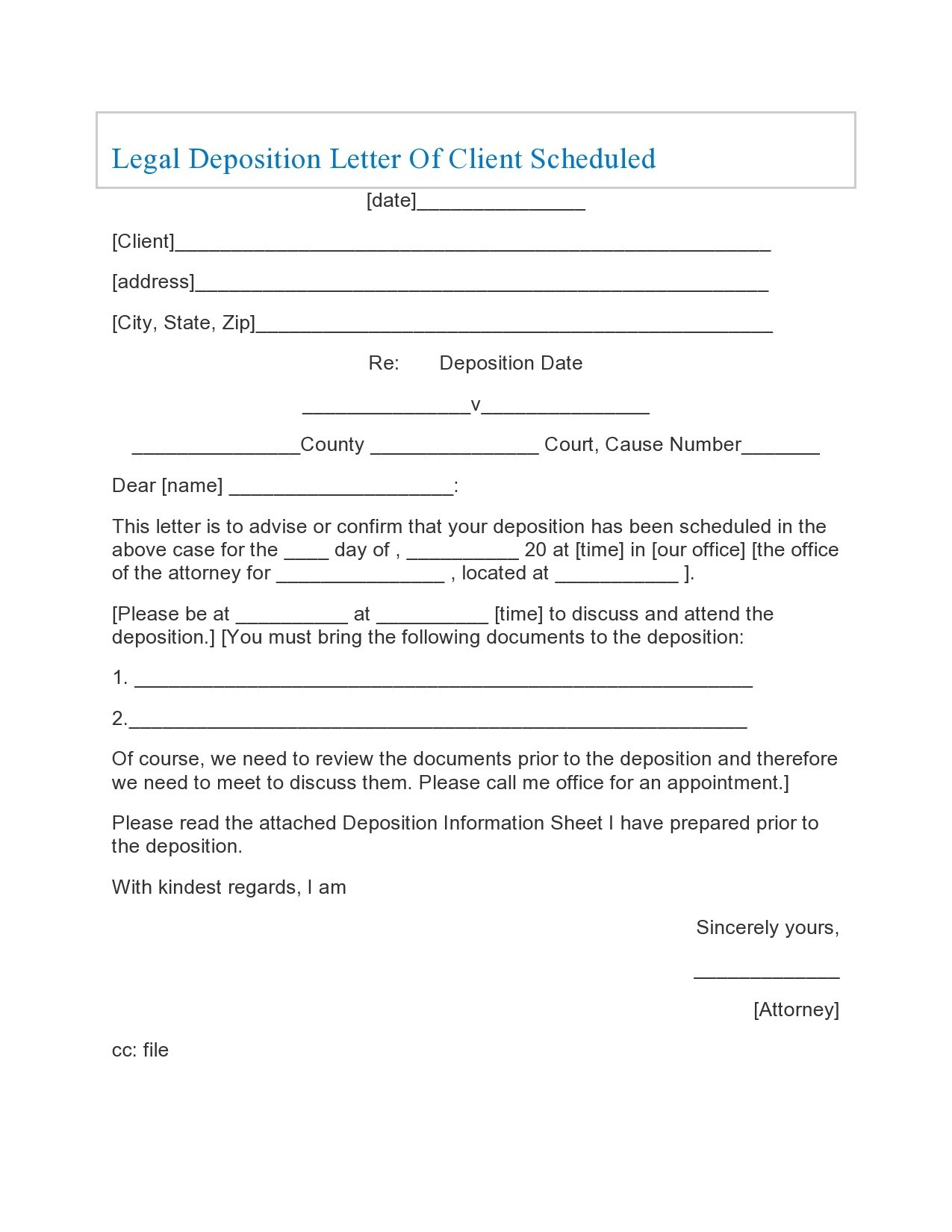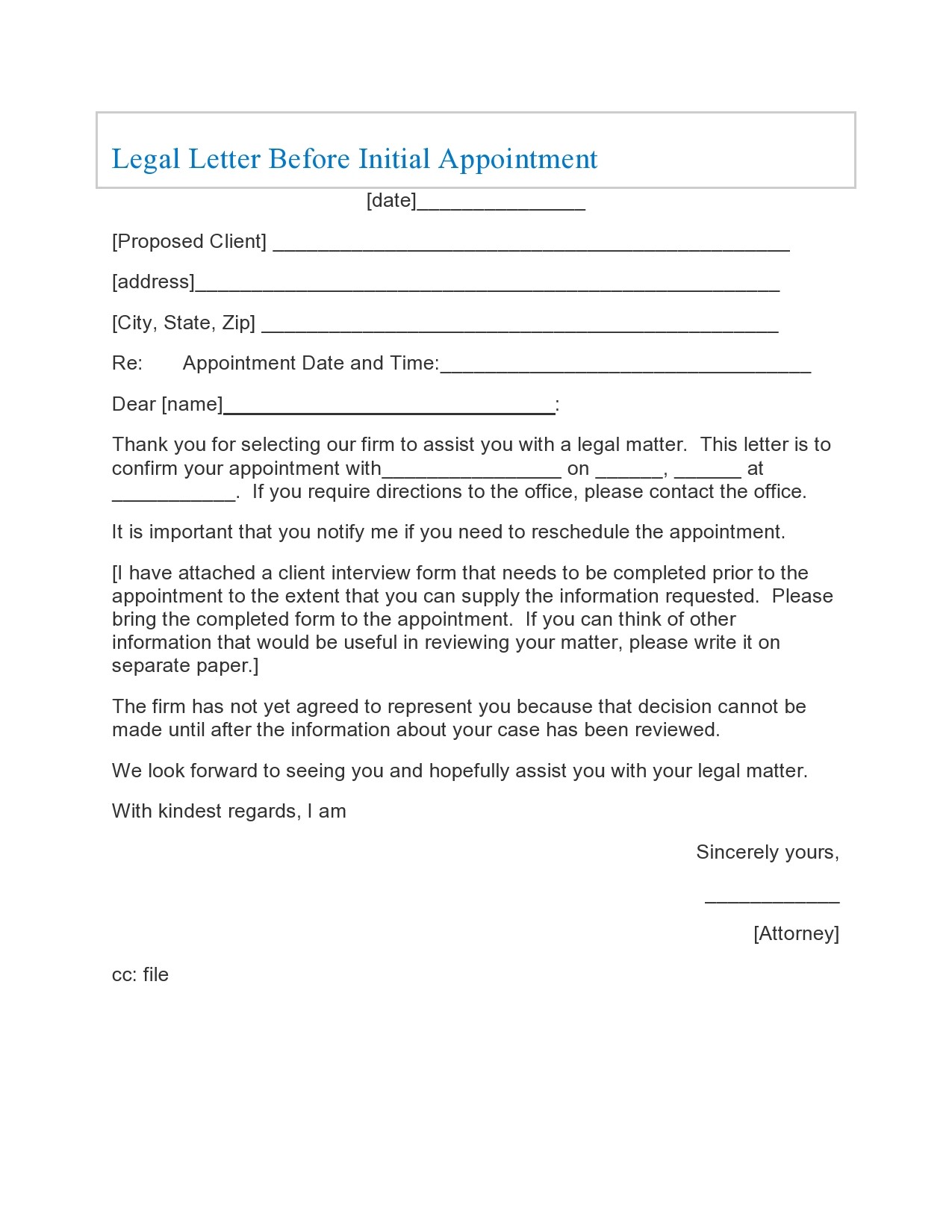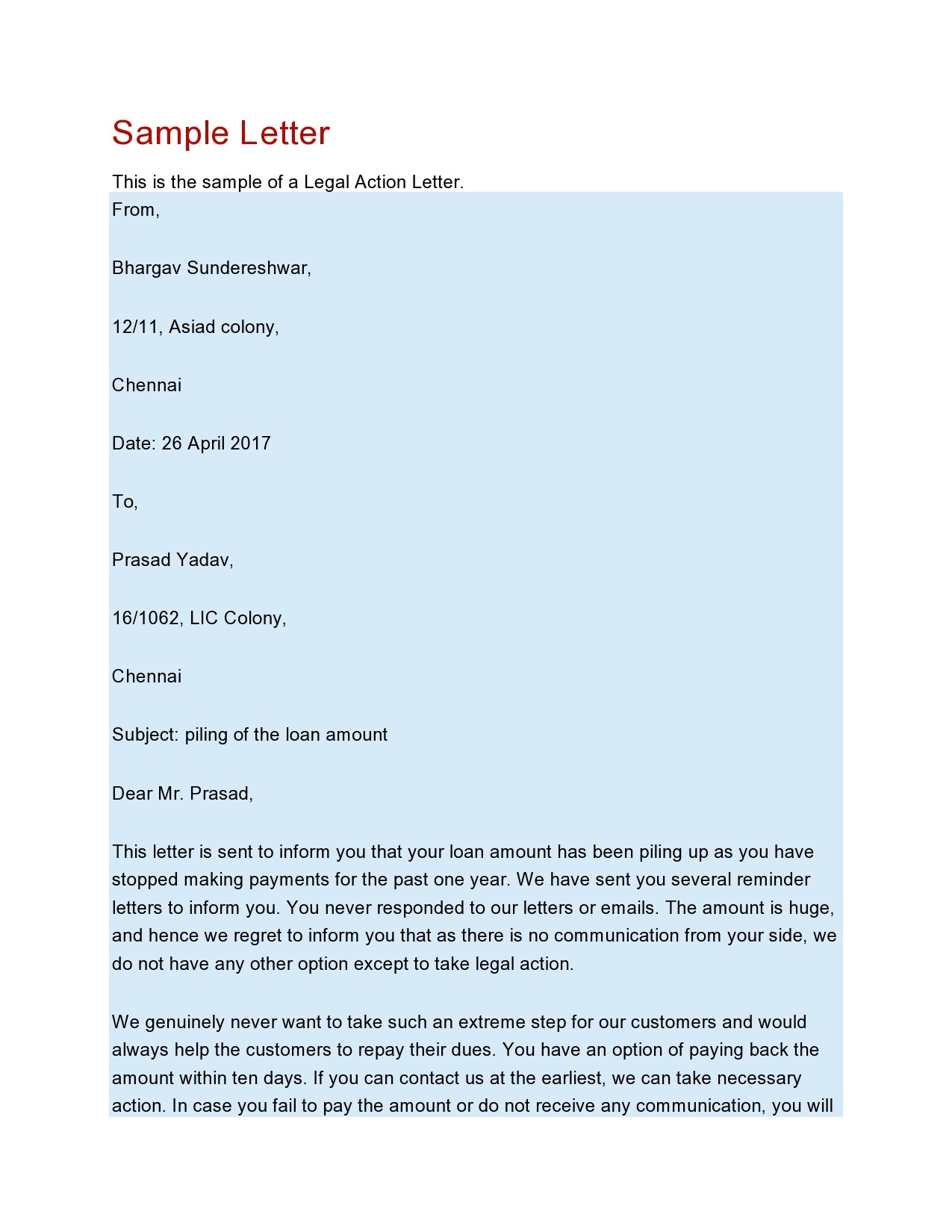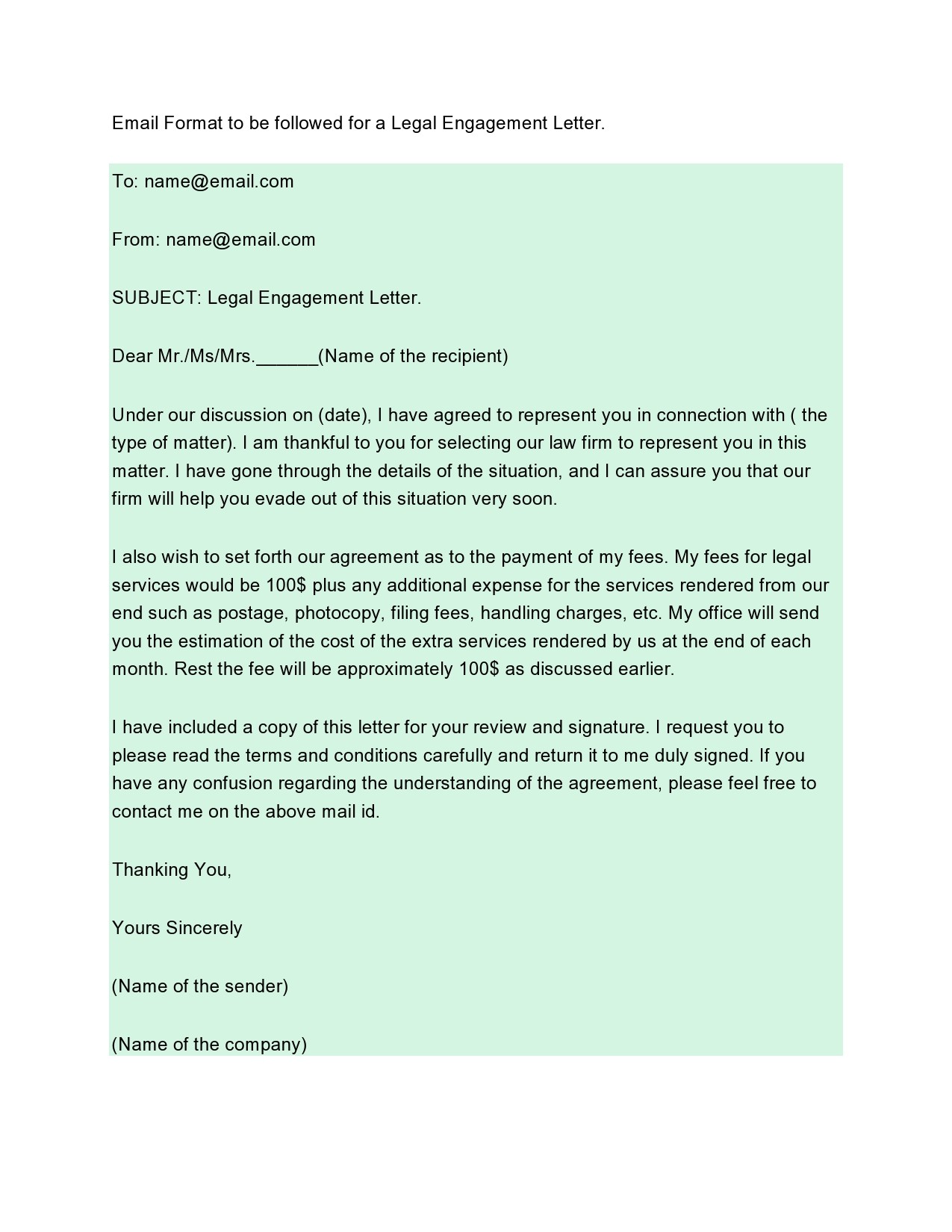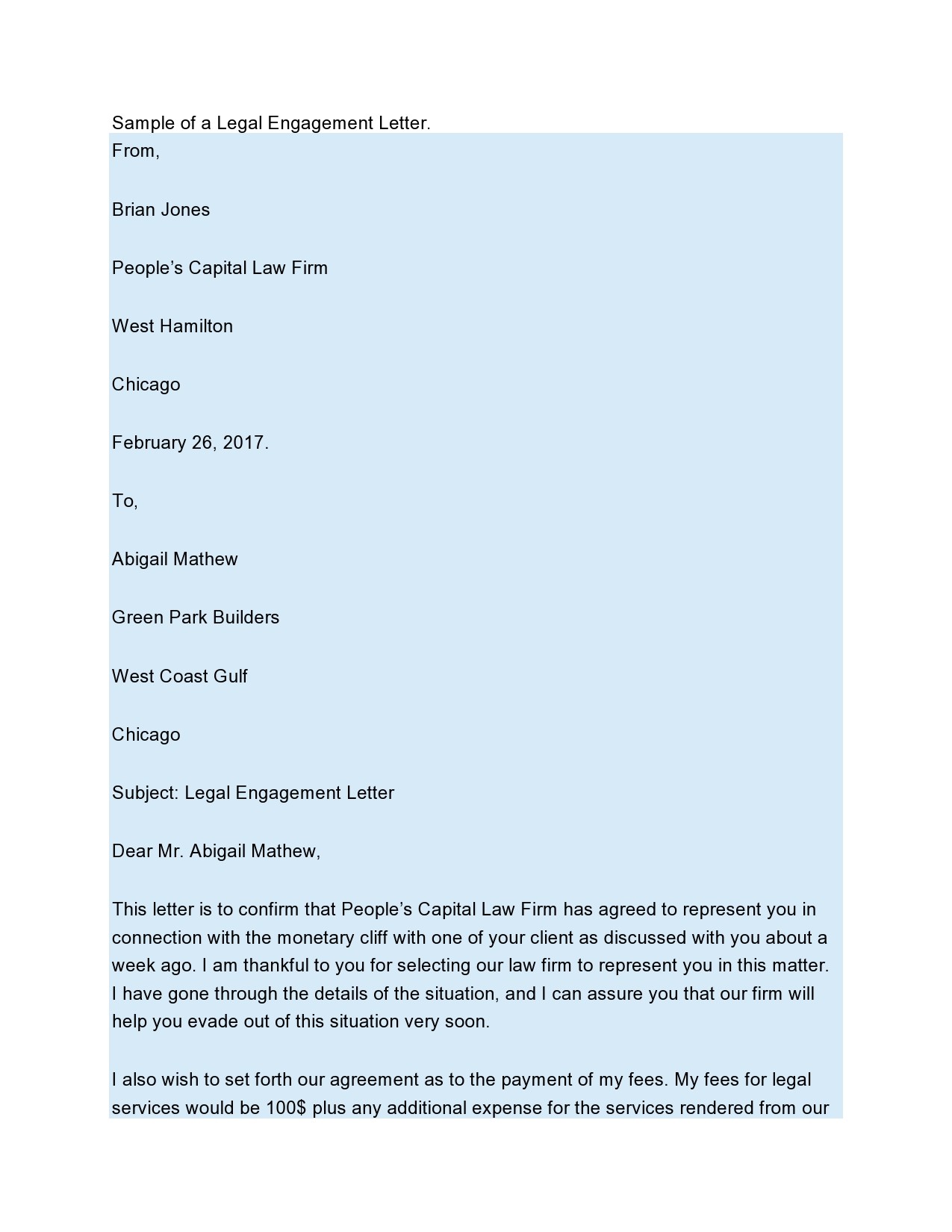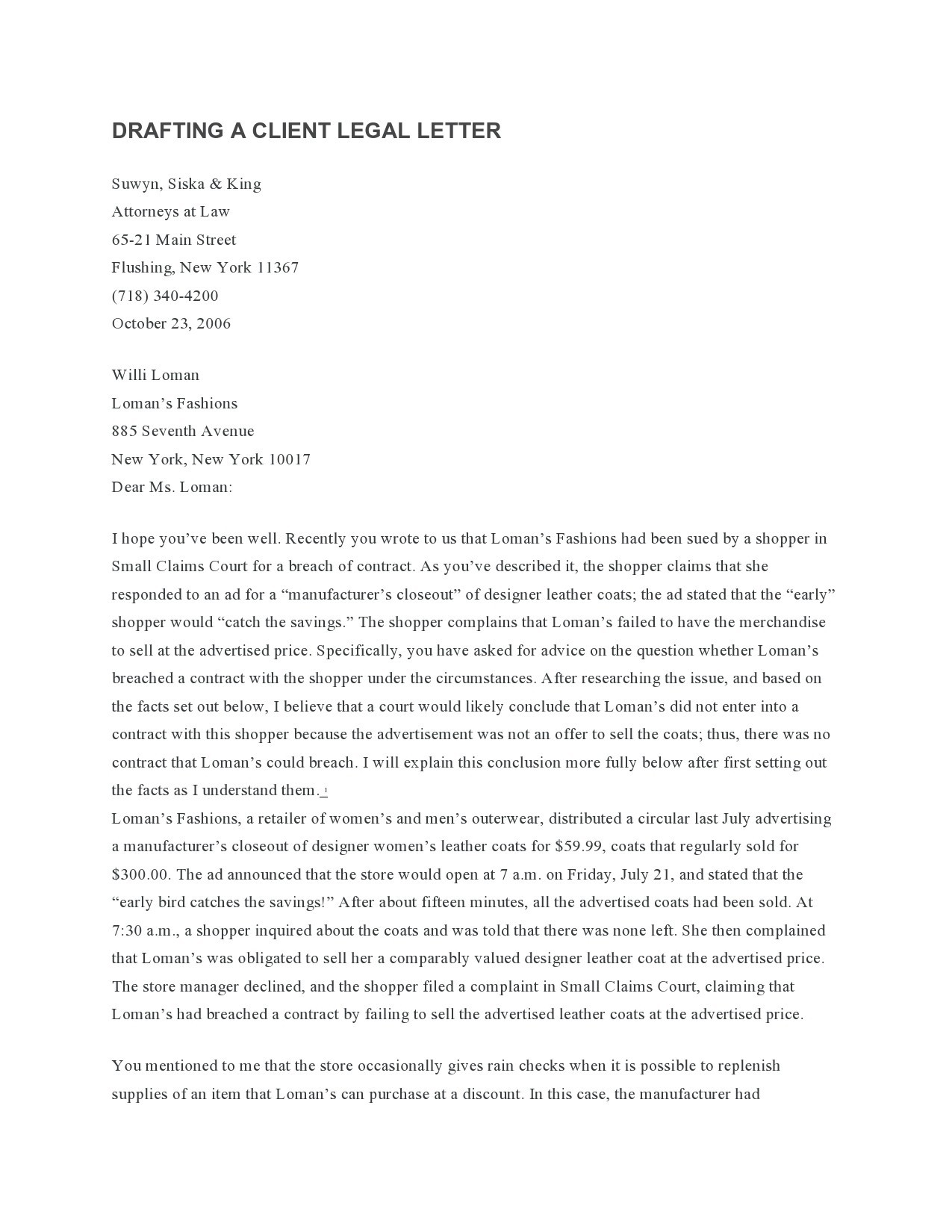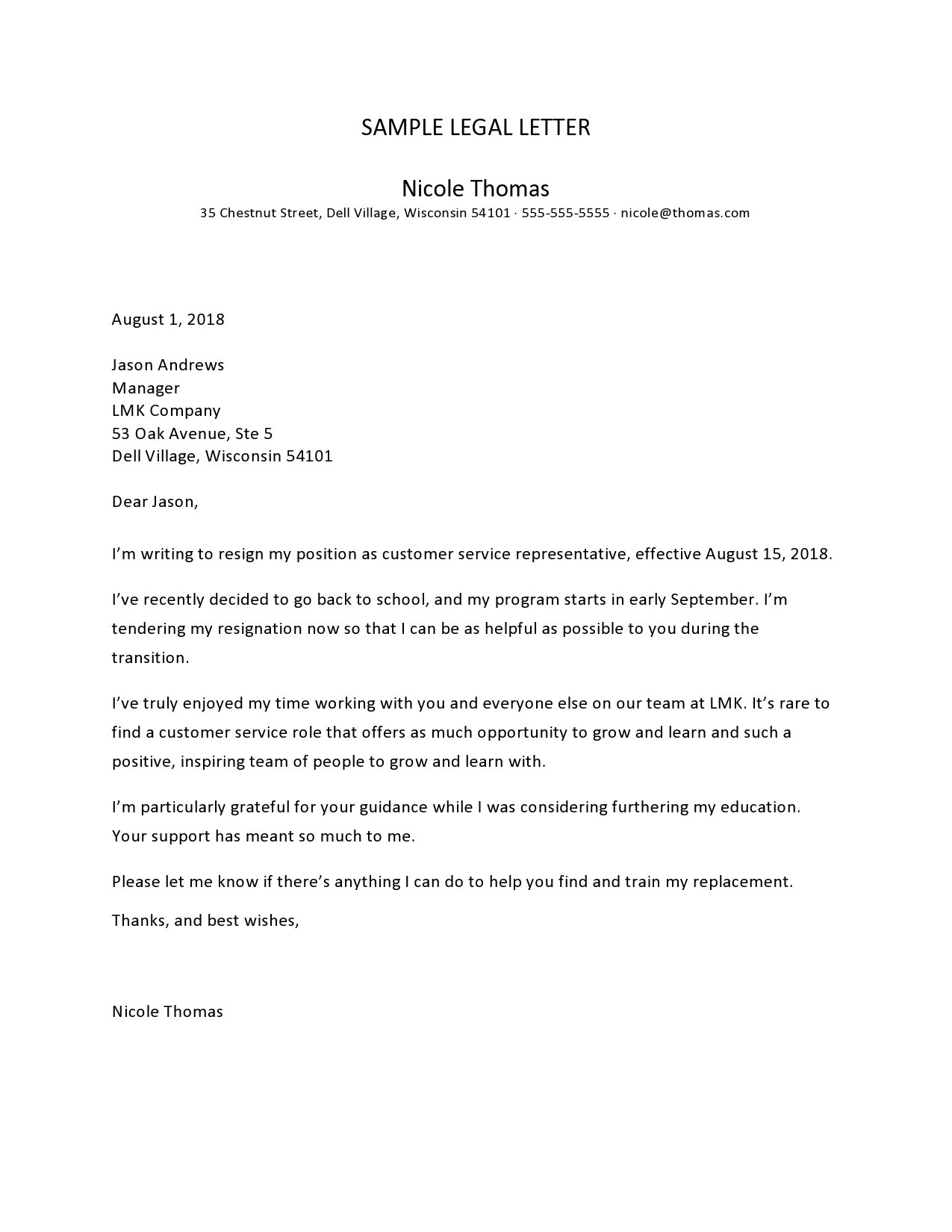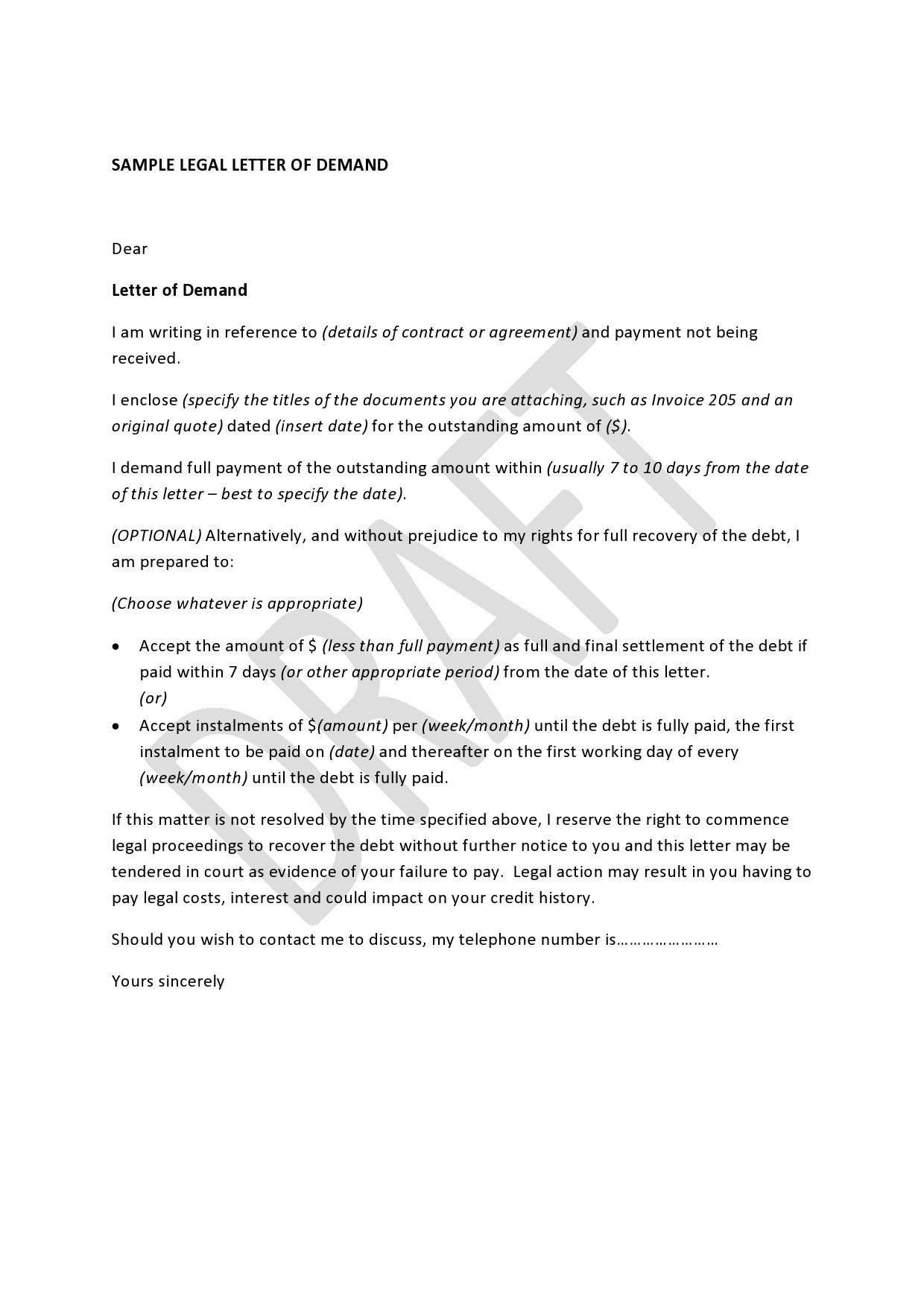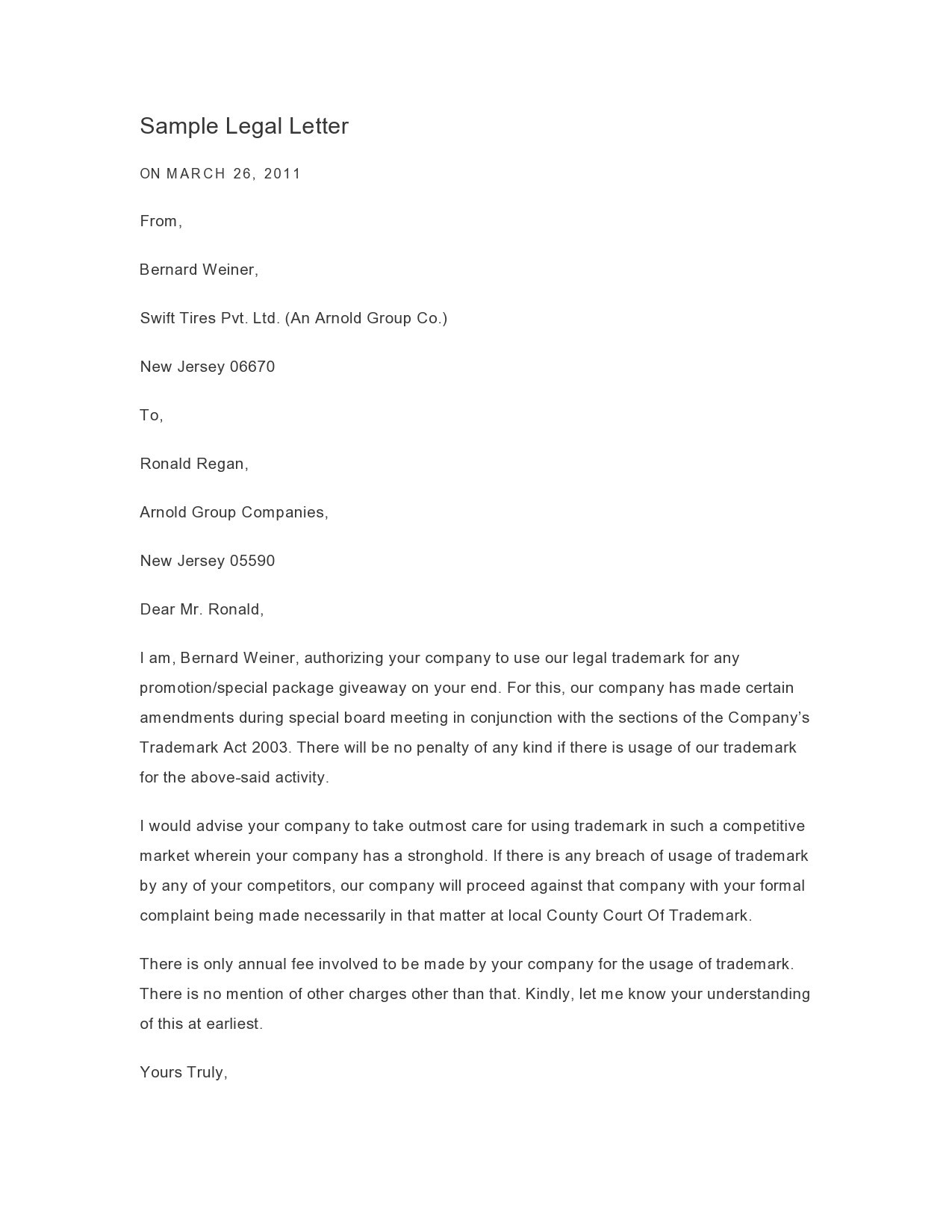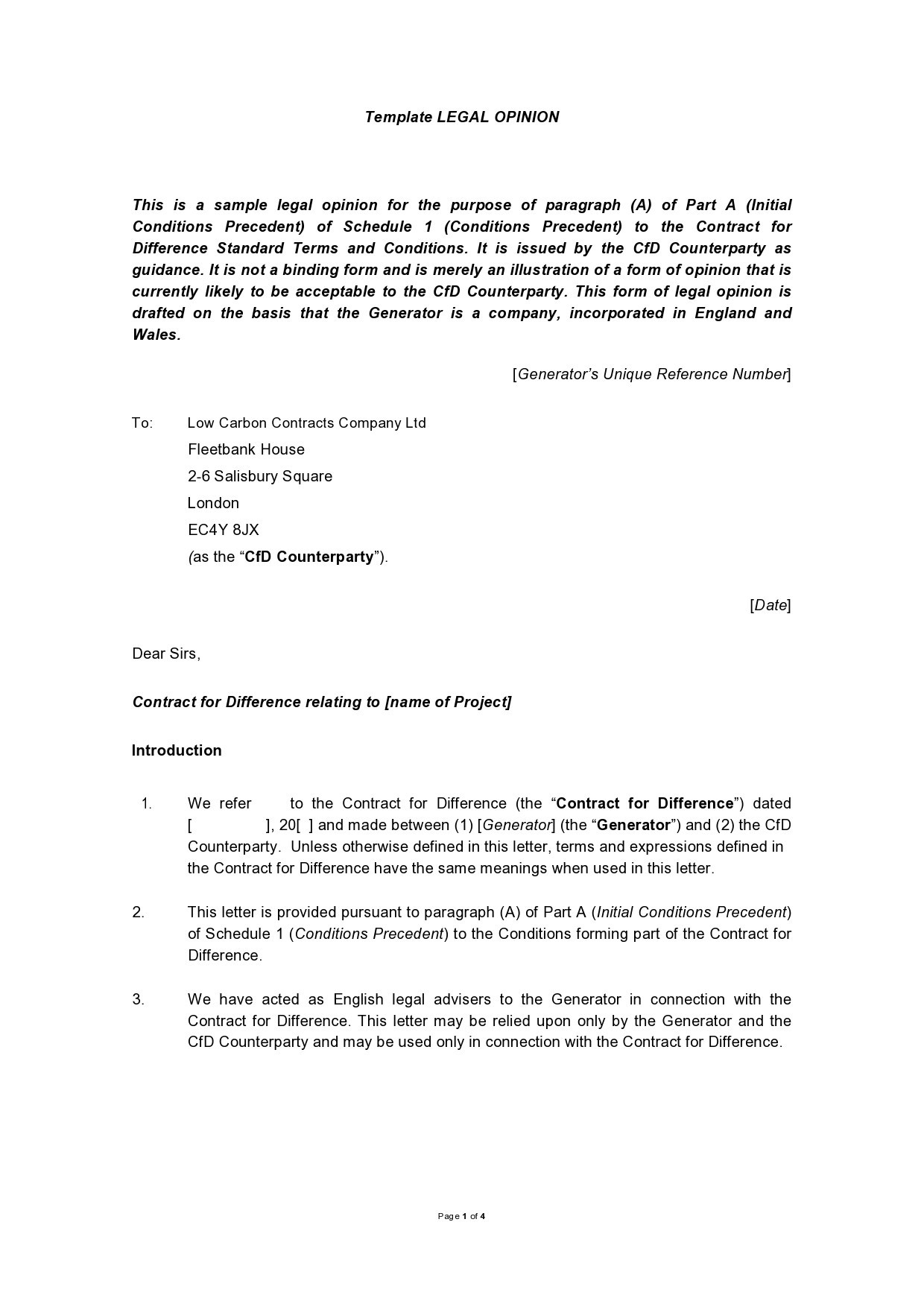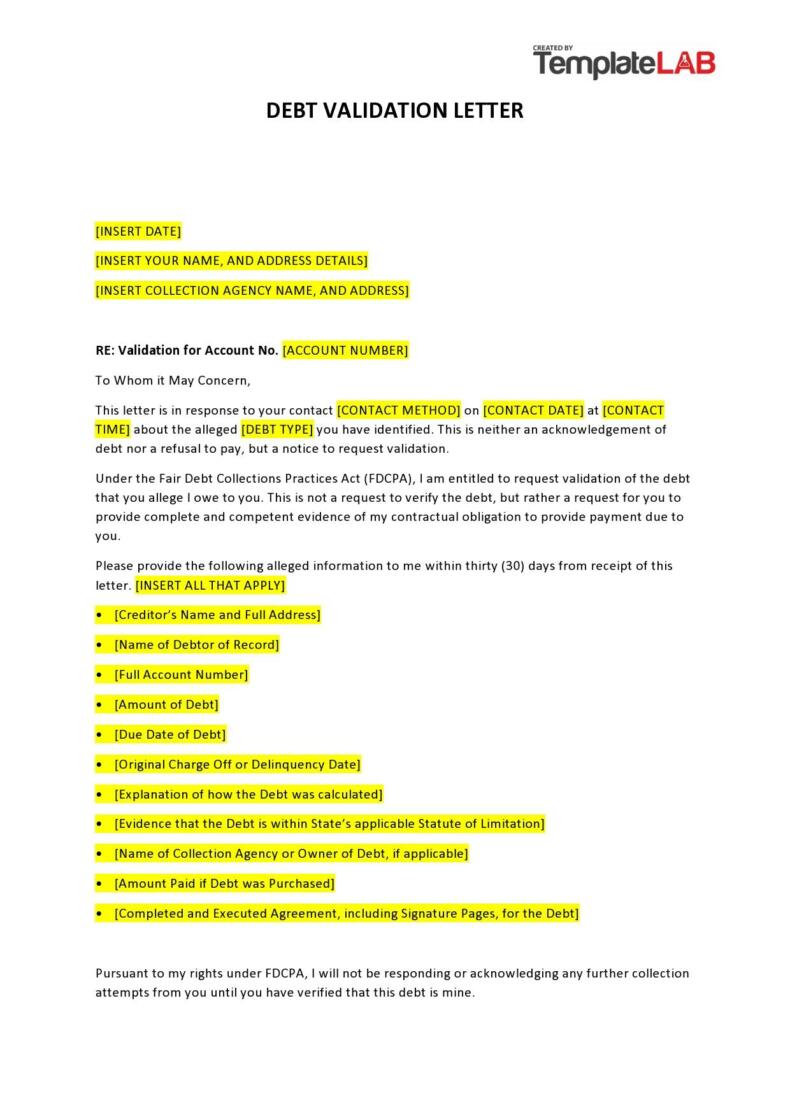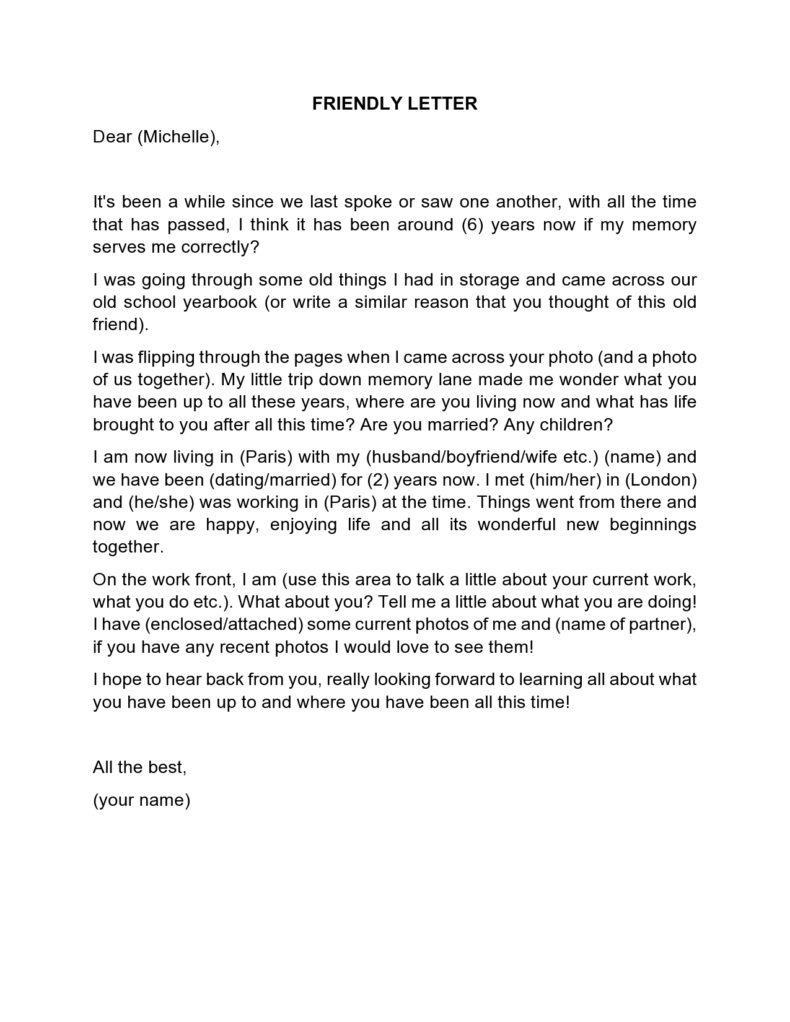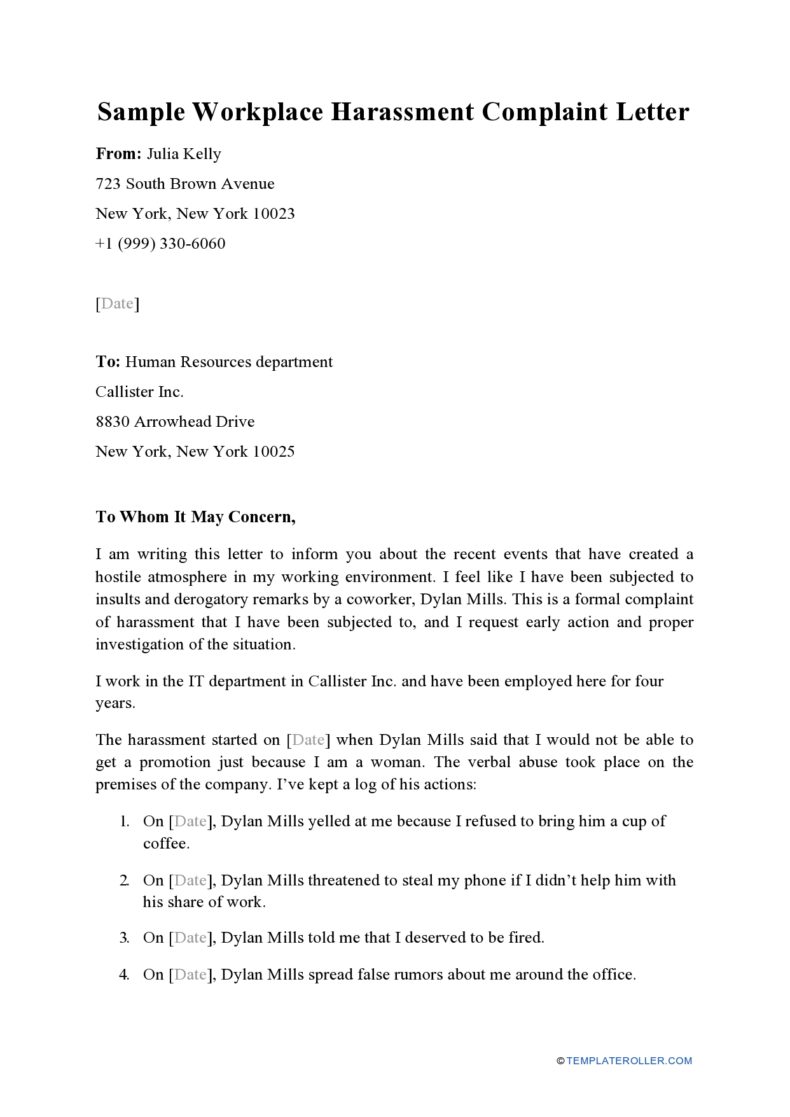People often need the services of lawyers to take care of different legal matters that they face in certain situations. For a legal case, the main thing that you need is a legal letter format. This is a very crucial document that designates the lawyer to act on issues on your behalf. Such a document uses language that is both accurate and formal.
Table of Contents
This means the process of crafting this letter should be meticulously done. There are various reasons for writing this letter or using a legal letters template. Writing one could feel cumbersome, especially if you’re not familiar with legal lingo. The tips here will apprise you on how to write a legal letter perfectly.
Legal Letter Formats
What is a legal letter?
A legal letter format is extremely powerful as it demands enforceability. As you browse through legal letter writing samples, you’ll discover that they contain terms that urge the recipient to put them into action. Since both parties agree to the terms stressed in the letter, they have the legal obligation to act accordingly.
To make your legal letters template more credible, it requires a lot of sensibility and consideration. The letter should be thoroughly substantial in the claims that you want to articulate. Also, you should write it clearly using the proper language. It’s essential that the provisions of a legal letter should be clearly stated to guarantee the correct performance of the responsibilities it demands.
Moreover, it’s important that all the parties involved should understand the contained subjects. There should be no possible grey areas of not understanding the terms correctly and any respective actions that the involved parties want to generate.
Legal Letters Templates
Elements of a legal letter format
The main purpose of a legal letter is to bring together an agreement among the parties. It’s also important to define the conditions that both parties have agreed upon accordingly. You can use such letters profusely throughout the course of the business and with the assistance of legal aids. But you can also learn how to compose a legal letter even without a lawyer.
First, you have to understand the letter itself. You may think that composing the letter is very easy. True, the legal letter format is very short. But although succinct, you shouldn’t compromise on substance. The simplicity of such letters lies in your ability to create all of the terms that it states indubitable and clear. To do this, include the following elements:
- The agreement
As you will notice in legal letter writing samples, you should clarify the details that surround the agreement. This proves that the agreement exists. - The terms of the agreement
Clarify the provisions that you have agreed upon, the ones you have obligated or the ones you have demanded to do as well. - The time period for meeting the terms of the agreement
Mention the provision of the time frame for performing and accomplishing said obligations. Make sure to set a reasonable time period. - The consequences of breach or non-compliance
The legal letter should also contain a section on the consequences that non-performers will potentially confront should there be a failure in meeting the stated responsibilities.
To sum these all up, the legal letter states the actions that the involved parties should take. The letter should express a sense of urgency about the obligations of the concerned parties. Legal counsels training and experience to compose proper legal letter writing samples. There is nothing wrong with making your own letter without counsel but just make sure you compose your letter correctly.
How To Write A Legal Letters?
Do’s and Don’ts of writing a legal letter format
One important part of the legal system works through written documents that either address or demand different aspects of the judicial system. These written documents introduce judges to the facts of each case, state the laws that apply, and argue to pursue the desired resolution or action of the legal dispute.
For this, the legal letters template should always be well-researched and crafted. You should clearly organize it and it should have a professional format and tone. Here are some Dos and Don’ts to help you when composing a legal letter.
The Do’s:
- Maintain focus throughout the process
Both intended and unintended audiences can read legal letters. Therefore, it’s more important to focus on your intended audience to make sure that the content of the letter isn’t misinterpreted.
When writing the legal letter format, it’s best to begin early with a plan. The more time you have, the greater the opportunity that you can write a polished, high-quality letter without mistakes. - Come up with coherent and consistent arguments
The intended audience of your legal letter would be more appreciative if you provide a coherent document that investigates the facts of the case diligently while addressing relevant policies.
To accomplish this, the first step of preparation is to do thorough research on the applicable law, investigate the facts diligently, organize and plan the letter, and make certain that any presented legal theory has consistency with applicable law. The provisions of the arguments vary depending on your audience as the latter determines the style and format of the letter. - Use short sentences and paragraphs in your letter
You shouldn’t create a complicated letter. Paragraphs that are too long and peppered with legal jargon can frustrate clients as they might not understand the case completely.
Make your sentences short as readers find it easier to understand the facts and from this, strategically plan the case. Keep the letter’s sentences and paragraphs short, accurate, and honest while still capturing all of the important facts and citing the records correctly. - Make sure your language has precision
Use precise English grammar in the construction of sentences so that the reader has the chance to understand your letter and the facts you presented. Your letter’s draft should undergo several essential checks which include proofreading for grammar and spelling.
Also, perform editing, citing cases, redrafting, and citing authorities accurately. Make sure to stick with any court-specific technical requirements in the letter’s format like margins, document length, and fonts.
The Don’ts:
- Avoid making assumptions about your readers
Never make the assumption that the reader knows the law when writing a legal letter format. To make the reader understand better, use simple words when explaining the facts of your case. A lucid explanation of the law can ease the judicial or the legal writing process through the creation of a common understanding of all the facts. - Avoid using contractions
When writing anything related to legal processes, don’t use word contractions as meanings may get lost when using shortened forms. - Don’t provide personal opinions without supporting it with the authoritative law
Always keep in mind that when writing a legal letter, your opinions aren’t relevant in the case. A solid legal argument must always form the basis of any legal matter. Also, try to avoid using personal pronouns.
Legal Letter Writing Samples
How do you write a legal letter?
The use of letters serves many purposes. Legal letters can settle issues between two parties before having to go to court. It can also play a role in the negotiation of contracts and similar legal matters. If you have to write the legal letter yourself, keep the tone professional, write concisely and precisely so that the reader has no doubts in his mind in terms of your purpose.
Like any other legal document, these letters must be in the proper legal letter format. Use it to present the issues you want from the other party or all of the information you want to share with the other party. Here are steps you may want to consider when writing a legal letter template:
Compose the letter’s introduction
- Type the complete name and address of the party you’re addressing. Place this at the top part of the letter. Also, include the date when you will send the letter.
- Use a standard font and black-colored ink to ensure legibility.
- Address the other party by courtesy title and name.
- If you plan to address the letter to a company and you don’t know the name of the specific recipient, you can begin with “Dear Sir or Madam” or “To Whom It May Concern.”
Cite any enclosures then state your reason for writing the letter
Citing enclosures at the beginning of the letter allows the other party to verify that you sent them and looked them over before you continue. Give the reason why composed the letter along with the details of the case. If needed, include the names of any other related parties with the exact dates of incidents or interactions. The more relevant details you can provide, the better.
State your goals and the specifics of the law
If applicable, cite any laws relevant to the case or the ones that apply to your legal letter. Explain the reason why such laws apply to the intent of your letter. State what you expect in writing the letter too. Provide a detailed time frame for a response to your letter before taking any further action.
Proofread your letter before sending
It is extremely important to proofread your letter. The final draft should be both concise and error-free. Avoid using passive verbs. Delete words and phrases that aren’t relevant. After proofreading, sign and date the at the bottom. Then send the letter the same day you wrote it.


